Expanding Wisdom and Compassion
Through Study and Contemplation
Video Courses and Lectures
• How to See Yourself as You Really Are •
• Seminar on Buddhist Tantra •
• Seminar on the Middle Way School (Madhyamaka) • • Seminar on the Mind-Only School (Cittamatra) • • Analysis of Going and Coming: Is Going Possible? • • Mipam Gyatsho's First Cycle on Fundamental Mind • • Mipam Gyatsho's Second Cycle on Fundamental Mind • • Jeffrey Hopkins on the self-immolations in Tibet • • Nāgārjuna's Precious Garland of Advice for a King • • Seminar and Meditation on the Great Completeness (English/Spanish) • • Jeffrey Hopkins on a Buddhist Perspective on Homosexuality • • Jeffrey Hopkins at Light of Berotsana Conference • • Daniel Perdue on Twenty-one Tibetan Thangkas • • Jeffrey Hopkins talks about Geshe Wangyal • • Jeffrey Hopkins on the Twelve Links of Dependent-arising (English/Spanish) • • Jeffrey Hopkins on Deity Yoga: The Six Deities (English/Korean) • • Jeffrey Hopkins and his interactions with HH the Dalai Lama (English/Chinese)•
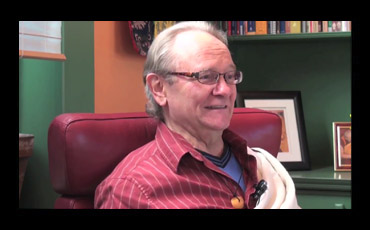
Jeffrey Hopkins: How to See Yourself as You Really Are, Part 1 (2010-09-11)
First part of a series of talks given in Williams Lake, British Columbia (Canada), September 11–12, 2010.
Recommended prior reading:
His Holiness the Dalai Lama, and Jeffrey Hopkins. How To See Yourself as You Really Are. London: Rider (2008).
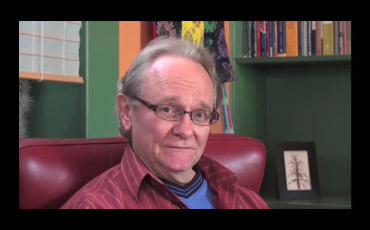
Jeffrey Hopkins: How to See Yourself as You Really Are, Part 2 (2010-09-12)
Second part of a series of talks given in Williams Lake, British Columbia (Canada), September 11–12, 2010.
Recommended prior reading:
His Holiness the Dalai Lama, and Jeffrey Hopkins. How To See Yourself as You Really Are. London: Rider (2008).
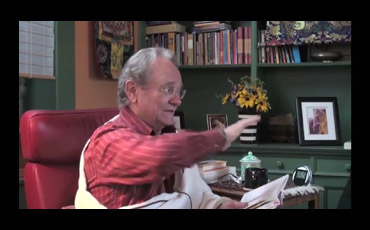
Jeffrey Hopkins: How to See Yourself as You Really Are, Part 3 (2010-09-12)
Third part of a series of talks given in Williams Lake, British Columbia (Canada), September 11–12, 2010.
Recommended prior reading:
His Holiness the Dalai Lama, and Jeffrey Hopkins. How To See Yourself as You Really Are. London: Rider (2008).
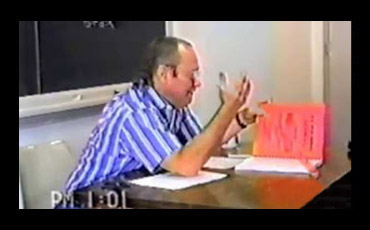
Jeffrey Hopkins: Seminar in Tsong-kha-pa’s The Great Exposition of Secret Mantra, Class # 1 (1995-08-31)
Following introductory remarks and an overview of the syllabus for the course, this first session covers the foundations of Buddhist practice as grounded in Atisha's explanation of the "Three Types of Beings."
Course Reading Materials:
• HH the Dalai Lama, Jeffrey Hopkins. Tantra in Tibet. London: George Allen and Unwin, Ltd. (1977); Ithaca: Snow Lion Publications (1987); rev. ed., The Great Exposition of Secret Mantra, Vol. One: Tantra in Tibet. Boulder: Snow Lion Publications (2016).
• HH the Dalai Lama, Jeffrey Hopkins. The Yoga of Tibet. London: George Allen and Unwin, Ltd. (1981); repr. Deity Yoga. Ithaca: Snow Lion Publications (1987); rev. ed., The Great Exposition of Secret Mantra, Vol. Two: Deity Yoga. Boulder: Snow Lion Publications (2016).
• HH the Dalai Lama, Jeffrey Hopkins, and Elizabeth Napper. Kindness, Clarity, and Insight. Ithaca: Snow Lion Publications (1984, Boston: 2012).
• Jeffrey Hopkins. The Tantric Distinction. London: Wisdom Publications (1984, Boston: 1999).
• Jeffrey Hopkins. Tantric Techniques. Ithaca: Snow Lion Publications (2009).
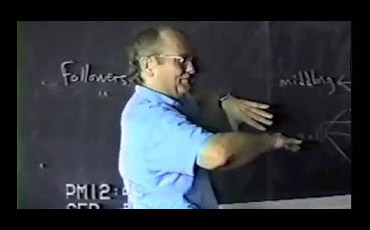
Jeffrey Hopkins: Seminar in Tsong-kha-pa’s The Great Exposition of Secret Mantra, Class # 2 (1995-09-05)
The session continues the discussion of Atisha's explanation of the "Three Types of Beings," and expands on the foundations of Buddhist practice as described in Tsong-kha-pa's Three Principal Aspects of the Path, and correlations to the Consequence School’s presentation of "Grounds and Paths" (sa lam).
Recommended prior reading:
HH the Dalai Lama, Jeffrey Hopkins, and Elizabeth Napper. Kindness, Clarity, and Insight. Ithaca: Snow Lion Publications (2012), pp. 118-156.

Jeffrey Hopkins: Seminar in Tsong-kha-pa’s The Great Exposition of Secret Mantra, Class # 3 (1995-09-12)
The session discusses the status of a Foe Destroyer (dgra bcom pa; arhat) entering the Bodhisattva path, the Sūtra mode of meditation on emptiness, the generation of calm abiding (zhi gnas; śamatha) and special insight (lhag mthong; vipaśyanā), and reasonings in the Middle Way School (dbu ma; madhyamaka).
Recommended prior reading:
Jeffrey Hopkins. Tantric Techniques. Ithaca: Snow Lion Publications (2008), pp. 7-43.
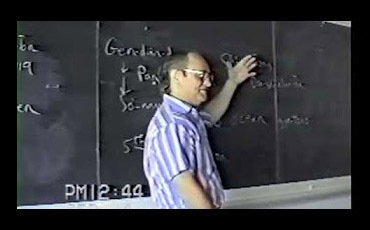
Jeffrey Hopkins: Seminar in Tsong-kha-pa’s The Great Exposition of Secret Mantra, Class # 4 (1995-09-14)
Following a student question about the Paṇ-chen Lama, the session continues the discussion of the Sūtra mode of meditation on emptiness and reasonings in the Middle Way School (dbu ma; madhyamaka), and discusses Chandrakirti's Sevenfold Reasoning at length.
Recommended prior reading:
[ Same as previous class. ]
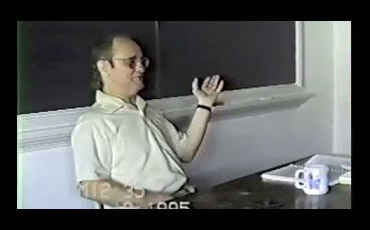
Jeffrey Hopkins: Seminar in Tsong-kha-pa’s The Great Exposition of Secret Mantra, Class # 5 (1995-09-19)
The session continues the discussion of the Sūtra mode of meditation on emptiness moving on to the subjects of a space-like meditative equipoise, as well as inference, direct perception, and the five types of duality.
Recommended prior reading:
Jeffrey Hopkins. Tantric Techniques. Ithaca: Snow Lion Publications (2008), pp. 45-68; HH the Dalai Lama, Jeffrey Hopkins. Deity Yoga. Ithaca: Snow Lion Publications (2008), pp. 19-27, 103-114.
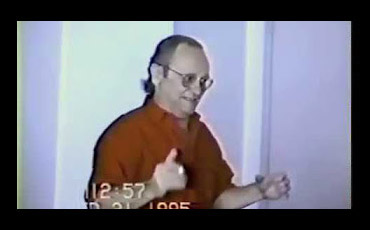
Jeffrey Hopkins: Seminar in Tsong-kha-pa’s The Great Exposition of Secret Mantra, Class # 6 (1995-09-21)
The session discusses the four classes of tantras, the difference between sūtra and tantra, and within tantra, the subjects of "divine pride" and "deity yoga."
Recommended prior reading:
Jeffrey Hopkins. Tantric Techniques. Ithaca: Snow Lion Publications (2008), pp. 65-116; HH the Dalai Lama, Jeffrey Hopkins. Deity Yoga. Ithaca: Snow Lion Publications (2008), pp. 19-20, 115-138.
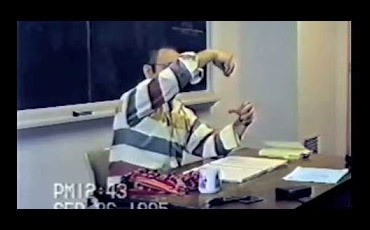
Jeffrey Hopkins: Seminar in Tsong-kha-pa’s The Great Exposition of Secret Mantra, Class # 7 (1995-09-26)
The session discusses the "six deities" (Ultimate, Sound, Letter, Form, Seal, and Sign), and the idea of paradigm change with regard to sūtra and tantra.
Recommended prior reading:
Jeffrey Hopkins. Tantric Techniques. Ithaca: Snow Lion Publications (2008), pp. 65-116; HH the Dalai Lama, Jeffrey Hopkins. Deity Yoga. Ithaca: Snow Lion Publications (2008), pp. 19-20, 115-138.
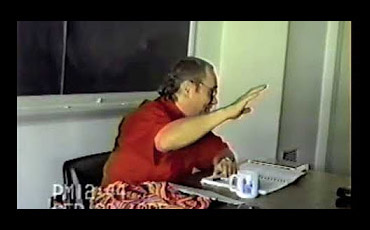
Jeffrey Hopkins: Seminar in Tsong-kha-pa’s The Great Exposition of Secret Mantra, Class # 8 (1995-09-28)
The session continues the discussion begun at the end of the previous class of Jung's theory of ego inflation in relation to tantric practice and deity yoga.
Recommended prior reading:
Jeffrey Hopkins. Tantric Techniques. Ithaca: Snow Lion Publications (2008), pp. 83-108; HH the Dalai Lama, Jeffrey Hopkins. Deity Yoga. Ithaca: Snow Lion Publications (2008), pp. 19-20, 77-101, 115-138, 214-215.

Jeffrey Hopkins: Seminar in Tsong-kha-pa’s The Great Exposition of Secret Mantra, Class # 9 (1995-10-03)
The session discusses the first of the two stages of action tantra: concentration with repetition. Included in the discussion are the topics of meditation on the deity in front, prāṇāyāma, and the generation of calm abiding in Action Tantra.
Recommended prior reading:
Jeffrey Hopkins. Tantric Techniques. Ithaca: Snow Lion Publications (2008), pp. 108-143; HH the Dalai Lama, Jeffrey Hopkins. Deity Yoga. Ithaca: Snow Lion Publications (2008), pp. 21-35, 139-179, 214-227.
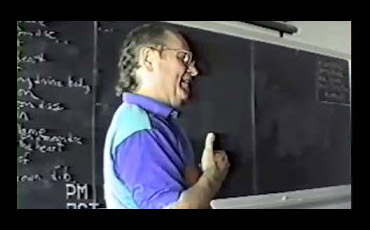
Jeffrey Hopkins: Seminar in Tsong-kha-pa’s The Great Exposition of Secret Mantra, Class # 10 (1995-10-12)
The session discusses the meditative stabilization of exalted speech, Varabodhi's system, and the five paths and ten grounds in tantra.
Recommended prior reading:
Jeffrey Hopkins. Tantric Techniques. Ithaca: Snow Lion Publications (2008), pp. 145-163; HH the Dalai Lama, Jeffrey Hopkins. Deity Yoga. Ithaca: Snow Lion Publications (2008), pp. 29-35, 155-179, 223-227.
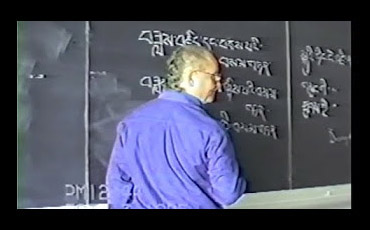
Jeffrey Hopkins: Seminar in Tsong-kha-pa’s The Great Exposition of Secret Mantra, Class # 11 (1995-10-17)
The session continues the discussion of the five paths and ten grounds in action tantra, and presents more on the difference between sūtra and tantra.
Recommended prior reading:
Jeffrey Hopkins. Tantric Techniques. Ithaca: Snow Lion Publications (2008), pp. 205-242, and optionally, chapter 10.
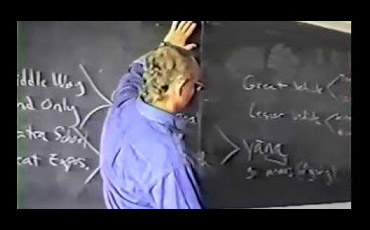
Jeffrey Hopkins: Seminar in Tsong-kha-pa’s The Great Exposition of Secret Mantra, Class # 12 (1995-10-19)
The session covers a review of points from previous discussions and presents an introduction to the sūtra system as distinct from tantra.
Recommended prior reading:
Jeffrey Hopkins. Tantric Techniques. Ithaca: Snow Lion Publications (2008), pp. 263-301; HH the Dalai Lama, Jeffrey Hopkins. Tantra in Tibet. Ithaca: Snow Lion Publications (1987), pp. 210-214; Jeffrey Hopkins. The Tantric Distinction. London: Wisdom Publications (1985) pp. 81-164, (1999) pp. 65-141.

Jeffrey Hopkins: Seminar in Tsong-kha-pa’s The Great Exposition of Secret Mantra, Class # 13 (1995-10-24)
The session discusses the difference between wisdom and method, alternate meanings of the word "method", yoga with and without signs, bodies of the Buddha, and the Indian tantric commentator Tripiṭakamāla.
Recommended prior reading:
HH the Dalai Lama, Jeffrey Hopkins. Tantra in Tibet. Ithaca: Snow Lion Publications (1987), pp. 1-150.

Jeffrey Hopkins: Seminar in Tsong-kha-pa’s The Great Exposition of Secret Mantra, Class # 14 (1995-10-26)
The session discusses the causes of the Form Body of a Buddha in relation to sūtra and tantra, and the difference between Lesser Vehicle and Great Vehicle ("Thirty-one Quintessential Points").
Recommended prior reading:
HH the Dalai Lama, Jeffrey Hopkins. Tantra in Tibet. Ithaca: Snow Lion Publications (1987), pp. 1-150, 173-200.
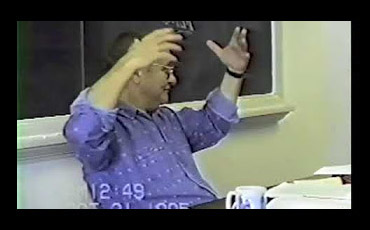
Jeffrey Hopkins: Seminar in Tsong-kha-pa’s The Great Exposition of Secret Mantra, Class # 15 (1995-10-31)
The session discusses the differences between Foe Destroyers (dgra bcom pa; arhat) and Solitary Realizers (rang sangs rgyas; pratyekabuddha), early scholastic notions of Buddhism, the notion of lineage, and more on deity yoga and the causes of a Buddha's Form Body.
Recommended prior reading:
Jeffrey Hopkins. The Tantric Distinction. London: Wisdom Publications (1985), pp. 83-164; (1999) 65-141; HH the Dalai Lama, Jeffrey Hopkins. Tantra in Tibet. Ithaca: Snow Lion Publications (1987), pp. 210-214.
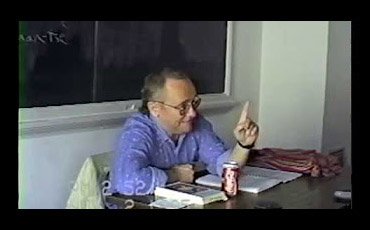
Jeffrey Hopkins: Seminar in Tsong-kha-pa’s The Great Exposition of Secret Mantra, Class # 16 (1995-11-02)
The session discusses Long-chen-pa's (klong chen pa, 1308-1364) presentation of secret mantra (i.e. tantra), and his interpretation of Tripiṭakamāla's points of distinction between sūtra and tantra, as well as points of contrast with Ge-luk-pa exegesis.
Recommended prior reading:
Jeffrey Hopkins. Tantric Techniques. Ithaca: Snow Lion Publications (2008), pp. 243-261.
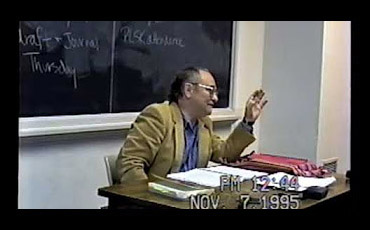
Jeffrey Hopkins: Seminar in Tsong-kha-pa’s The Great Exposition of Secret Mantra, Class # 17 (1995-11-07)
The session begins with a discussion of the proposed distinction between "clerical" and "shamanic" Buddhism in Tibet. The session then resumes the discussion of Long-chen-pa's ideas on the distinction between sutra and tantra, touching on the subjects of the Nying-ma (rnying ma) Nine Vehicle System, the concept of the Dharmadhātu, etc.
Recommended prior reading:
Jeffrey Hopkins. Tantric Techniques. Ithaca: Snow Lion Publications (2008), pp. 243-261.
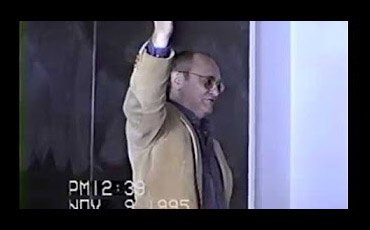
Jeffrey Hopkins: Seminar in Tsong-kha-pa’s The Great Exposition of Secret Mantra, Class # 18 (1995-11-09)
The session begins with a discussion of karma and its relationship to ignorance and ethics. The session covers a range of related topics: the Form Body of a Buddha in relation to tantric practice, the views of Tag-tshang Shay-rab-rin-chen (stag tshang shes rab rin chen, 1405-1477), the distinction between "Old" and "New" translation schools, Buddha-nature (de bzhin gshegs pa'i snying po; tathāgatagarbha), the role of conceptuality, etc.
Recommended prior reading:
Jeffrey Hopkins. Tantric Techniques. Ithaca: Snow Lion Publications (2008), pp. 243-261.
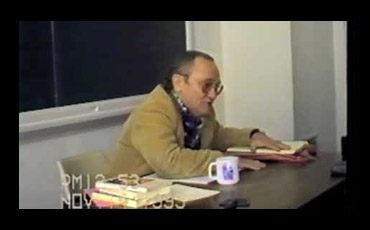
Jeffrey Hopkins: Seminar in Tsong-kha-pa’s The Great Exposition of Secret Mantra, Class # 19 (1995-11-14)
The session covers the discussion of Bu-tön's presentation of the division of the four tantra sets in light of Tsong-kha-pa's critique, and other attempts to categorize the tantras. Additional topics discussed are the suitable disciples for practicing Highest Yoga Mantra (sngags bla med; anuttarayoga-mantra) and the levels of mind, and dream yoga.
Recommended prior reading:
Jeffrey Hopkins. Tantric Techniques. Ithaca: Snow Lion Publications (2008), pp. 321-357.
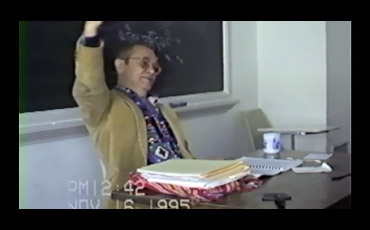
Jeffrey Hopkins: Seminar in Tsong-kha-pa’s The Great Exposition of Secret Mantra, Class # 20 (1995-11-16)
The session continues the discussion of the division of the four tantra sets, as well as the most subtle mind of clear light in practicing Highest Yoga Tantra, dream yoga, sexual yoga, etc. This is followed by a discussion of the experience of the clear light and the four schools of Tibetan Buddhism.
Recommended prior reading:
Jeffrey Hopkins. Tantric Techniques. Ithaca: Snow Lion Publications (2008), pp. 321-357.
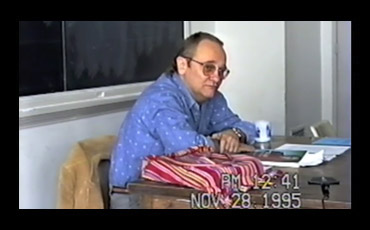
Jeffrey Hopkins: Seminar in Tsong-kha-pa’s The Great Exposition of Secret Mantra, Class # 21 (1995-11-28)
The session covers the use of the afflictions (desire, hatred, and ignorance) on the path, and continues the discussion of the union of the old and new translation schools. The topic of the view of emptiness in Great Completeness (rdzogs chen) in relation to "basic mind" or "intrinsic awareness" (rig pa) is also covered, specifically in terms of the distinction between the view of the object (yul gyi lta ba) versus the view of the subject (yul can gyi lta ba). This is followed by a discussion of concordant ultimates (don dam dang mthun pa).
Recommended prior reading:
"The Union of the Old and New Translation Schools" in HH the Dalai Lama, Jeffrey Hopkins, and Elizabeth Napper, Kindness, Clarity, and Insight. Ithaca: Snow Lion Publications (1984).
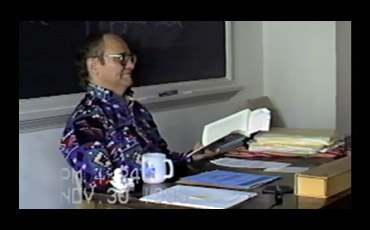
Jeffrey Hopkins: Seminar in Tsong-kha-pa’s The Great Exposition of Secret Mantra, Class # 22 (1995-11-30)
The session begins with a discussion of hierarchies in presentations of Buddhist theory and practice. This is followed by the continuing discussion of the union of the old and new translation schools, referring to the five stages (rim lnga; pañcakrama) of Highest Yoga Tantra.
Recommended prior reading:
"The Union of the Old and New Translation Schools" in HH the Dalai Lama, Jeffrey Hopkins, and Elizabeth Napper, Kindness, Clarity, and Insight. Ithaca: Snow Lion Publications (1984).
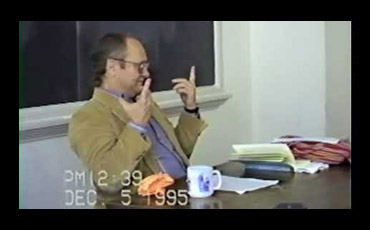
Jeffrey Hopkins: Seminar in Tsong-kha-pa’s The Great Exposition of Secret Mantra, Class # 23 (1995-12-05)
The session concludes the course and the discussion of the union of the old and new translation schools, looking at the specific topics of the nature of Buddha-qualities and the foundational levels of mind in Nyingma and Gelug, the channel-wheel ('khor lo; cakra) system in tantra, the perception of a Buddha, meditation on the absence of inherent existence, and ways of looking at different paths.
Recommended prior reading:
"The Union of the Old and New Translation Schools" in HH the Dalai Lama, Jeffrey Hopkins, and Elizabeth Napper, Kindness, Clarity, and Insight. Ithaca: Snow Lion Publications (1984).
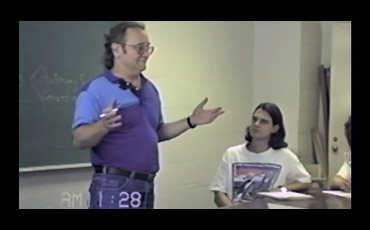
Jeffrey Hopkins: Seminar in Tsong-kha-pa’s The Essence of Eloquence on the Mind-Only School, Class # 1 (1996-08-29)
Following preliminary remarks and an overview of the course textbooks, the session introduces the text at the center of the course, The Essence of Eloquence (legs bshad snying po) by Tsong-kha-pa (tsong kha pa, 1357-1419), and the philosophy of Mind-Only (sems tsam; cittamātra) Buddhism. This is followed by a brief survey of the major issues: the Three Natures (ngo bo nyid gsum/rang bzhin gsum; trisvabhāva) and the Three Non-Natures (ngo bo nyid med pa gsum)."
Course Reading Materials:
• Jeffrey Hopkins. Emptiness in the Mind-Only School of Buddhism, Dynamic Responses to Dzong-ka-ba’s The Essence of Eloquence, Volume 1. Berkeley: Univ. Calif. Pr. (1999);
• Jeffrey Hopkins. Reflections on Reality, Dynamic Responses to Dzong-ka-ba’s The Essence of Eloquence, Volume 2. Berkeley: Univ. Calif. Pr. (2002);
• Jeffrey Hopkins. Absorption in No External World, Dynamic Responses to Dzong-ka-ba’s The Essence of Eloquence, Volume 3. Ithaca: Snow Lion Publications (2005).
Supplementary Materials:
• Chittamātra chapter of: Jeffrey Hopkins. Meditation on Emptiness. Boston: Wisdom Publications (1983, 1996);
• Mind-Only chapter of: Jeffrey Hopkins and Geshe Lhundup Sopa. Cutting Through Appearances. Ithaca: Snow Lion Publications (1990).
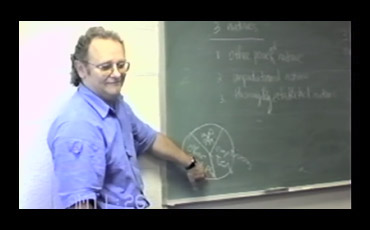
Jeffrey Hopkins: Seminar in Tsong-kha-pa’s The Essence of Eloquence on the Mind-Only School, Class # 2 (1996-09-03)
The session begins by reviewing the three natures and the three non-natures. It then delves into more detail concerning imputational natures (kun brtags, parikalpita) and the meaning of being "established by way of its own character" (rang gi mtshan nyid kyis grub pa, svalakṣaṇa-siddha).

Jeffrey Hopkins: Seminar in Tsong-kha-pa’s The Essence of Eloquence on the Mind-Only School, Class # 3 (1996-09-05)
The lecture begins by reviewing the life of the seventh-century Korean commentator on the Saṃdhinirmocana Sūtra, Wonch'uk. The lecture proceeds to cover the three periods of Yogacara in China, Asanga and Vasubandhu, and assertions regarding names vs. objects.
Recommended prior reading:
• Jeffrey Hopkins. Emptiness in the Mind-Only School of Buddhism, Dynamic Responses to Dzong-ka-ba’s The Essence of Eloquence, Volume 1. Berkeley: Univ. Calif. Pr. (1999), pp. 1-55.
• Jeffrey Hopkins. Reflections on Reality, Dynamic Responses to Dzong-ka-ba’s The Essence of Eloquence, Volume 2. Berkeley: Univ. Calif. Pr. (2002), pp. 103-123.
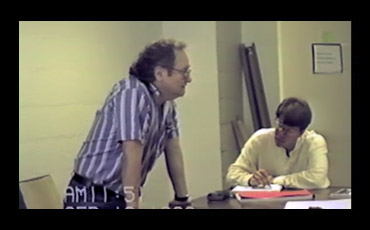
Jeffrey Hopkins: Seminar in Tsong-kha-pa’s The Essence of Eloquence on the Mind-Only School, Class # 4 (1996-09-10)
The lecture begins by reviewing the three natures and three non-natures. This is followed by terminology discussions regarding the two types of imputational natures (kun btags; parikalpita): existent imputational natures (yod rgyu'i kun btags) and non-existent imputational natures (med rgyu'i kun btags). Additional topics discussed are: being established from its own side (rang ngos nas grub pa) vs. being established by way of its own character (rang gi mtshan nyid gyi grub pa), and the meaning of "being established from its own side" (rang ngos nas grub pa) in Cittamātra and being the basis of designation of an object in contrast with being truely established (bden par grub pa) and being ultimately established (don dam par grub pa), etc.
Recommended prior reading:
• Jeffrey Hopkins. Emptiness in the Mind-Only School of Buddhism, Dynamic Responses to Dzong-ka-ba’s The Essence of Eloquence, Volume 1. Berkeley: Univ. Calif. Pr. (1999), pp. 39-47.
• Jeffrey Hopkins. Reflections on Reality, Dynamic Responses to Dzong-ka-ba’s The Essence of Eloquence, Volume 2. Berkeley: Univ. Calif. Pr. (2002), pp. 124-140.
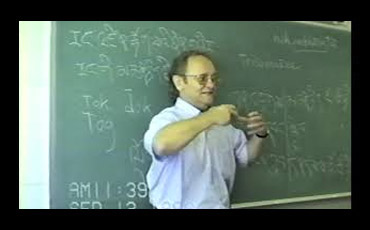
Jeffrey Hopkins: Seminar in Tsong-kha-pa’s The Essence of Eloquence on the Mind-Only School, Class # 5 (1996-09-12)
The lecture begins by discussing the trisvabhāva and its Tibetan synonyms, and the order of teaching the three natures (imputational, other-powered, thoroughly established) by the Buddha in the Samdhinirmocana Sūtra. This is followed by discussions of the two types of emptiness in the Mind Only system, the idea of a phenomenon being established by way of its own character as the referent of a conceptual consciousness apprehending it (rang 'dzin rtog pa'i zhen gzhir rang gi mtshan nyid kyis grub pa), and the category of "a determinative knower that apprehends a term [generality] and meaning [generality] in the manner of being suitable to be associated," Tibetan views on the two emptinesses, and Kensur Yeshe Thupten on a difference between subject and object.
Recommended prior reading:
• Jeffrey Hopkins. Reflections on Reality, Dynamic Responses to Dzong-ka-ba’s The Essence of Eloquence, Volume 2. Berkeley: Univ. Calif. Pr. (2002), pp. 68-100.
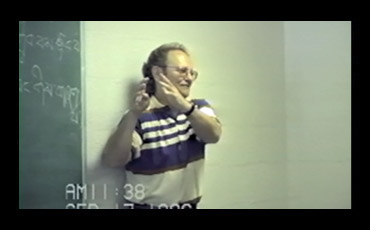
Jeffrey Hopkins: Seminar in Tsong-kha-pa’s The Essence of Eloquence on the Mind-Only School, Class # 6 (1996-09-17)
The lecture begins by discussing the meaning of "being a referent of a conceptual consciousness," "being merely imputed by a conceptual consciousness," and "being posited through the force of name and concepts." The lecture goes on to discuss this concept as a basis of differentiating between the Mind-Only school and the lower tenet systems such as Sautrantika and Vaibhāṣika. This is followed by a discussion of what it means to realize emptiness in the Mind-Only system.
Recommended prior reading:
• Jeffrey Hopkins. Reflections on Reality, Dynamic Responses to Dzong-ka-ba’s The Essence of Eloquence, Volume 2. Berkeley: Univ. Calif. Pr. (2002), pp. 150-185.
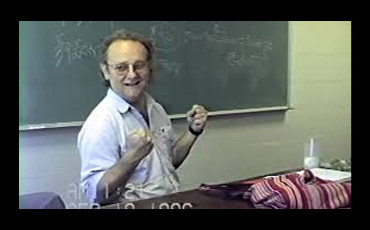
Jeffrey Hopkins: Seminar in Tsong-kha-pa’s The Essence of Eloquence on the Mind-Only School, Class # 7 (1996-09-19)
The lecture begins by discussing the difference between phenomena "being one entity with mind" and "being mind". The lecture proceeds to discuss the seventh and eighth consciousnesses in Mind-Only: the afflicted consciousness (and its conception of a self of persons), and the mind-basis-of-all. Other topics discussed are karmic seeds, and whether or not the continua of others exist in the Mind-Only system.
Recommended prior reading:
• Jeffrey Hopkins. Reflections on Reality, Dynamic Responses to Dzong-ka-ba’s The Essence of Eloquence, Volume 2. Berkeley: Univ. Calif. Pr. (2002), pp. 103-149.
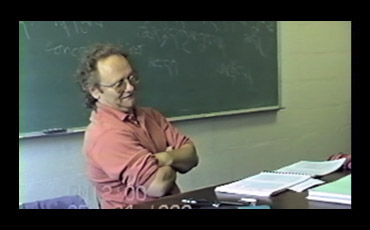
Jeffrey Hopkins: Seminar in Tsong-kha-pa’s The Essence of Eloquence on the Mind-Only School, Class # 8 (1996-09-24)
The lecture begins by revisiting the idea of "a form being established by way of its own character as the referent of the term 'form'," and some reflections on Tibetan grammar. The lecture the proceeds to discuss the two emptinesses in Mind-Only, the compatibility between the doctrines of emptiness and mind-only in Asaṅga's Mahāyāna-saṃgraha (theg bsdus) and Bodhisattva-bhūmi (byang sa) and how this is handled by Willis, Schmithausen, and Tsong-kha-pa, and proceeds to discuss the advanage in the Geluk system of focusing on an absence of duality of subject and object and contrast with Nyingma interpretations.
Recommended prior reading:
• Jeffrey Hopkins. Reflections on Reality, Dynamic Responses to Dzong-ka-ba’s The Essence of Eloquence, Volume 2. Berkeley: Univ. Calif. Pr. (2002), pp. 150-269, 525-537.
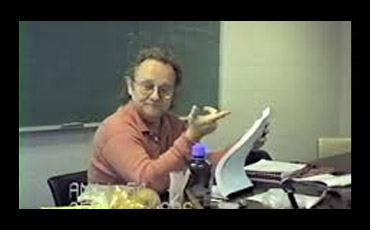
Jeffrey Hopkins: Seminar in Tsong-kha-pa’s The Essence of Eloquence on the Mind-Only School, Class # 9 (1996-09-26)
The lecture begins with questions from students and answers. Topics include: the difference between "own character" (rang bzhin) and "unique character" (rang gi mtshan nyid) in reference to Wonch'uk's commentary, the meaning of "established by way of own character" with regard to other-powered natures and thoroughly established natures, appearing objects (snang yul) in the Mind-Only system, difference between tenet systems with regard to the direct perception of emptiness, etc. The lecture then proceeds to give an overview and synopsis of some of the points of dispute in the exegesis of Tsong-kha-pa's "Essence of Eloquence." This is followed by a discussion of self-cognition (rang rig) with regard to an exalted wisdom consciousness realizing emptiness, the terminology of "non-affirming negation" in Indian Buddhist sources, and the larger issue of appearance and emptiness in Cittamatra and Tantra.
Recommended prior reading:
• Jeffrey Hopkins. Emptiness in the Mind-Only School of Buddhism, Dynamic Responses to Dzong-ka-ba’s The Essence of Eloquence, Volume 1. Berkeley: Univ. Calif. Pr. (1999), pp. 65-81, 249-260.
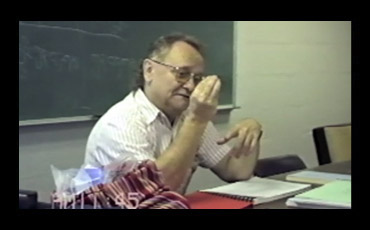
Jeffrey Hopkins: Seminar in Tsong-kha-pa’s The Essence of Eloquence on the Mind-Only School, Class # 10 (1996-10-01)
The lecture begins by revisiting the idea of emptiness as a non-affirming negation and contrasting this with the opinion of Jo-nang Dol-po-pa Shes-rab-rgyal-mtshan (1292-1361) and its similarity to the assertions of Samkhya. This proceeds to a discussion of the basis of emptiness (gtong gzhi) and the emptiness of emptiness. Following a brief discussion of monastic textbooks, the class proceeds to discuss the relationship between the three natures and the two truths. The class concludes with an introduction to the idea of other-powered natures being natureless in two ways, and the misinterpretation of the Sanskrit compound leading to thinking that other-powered natures (i.e. consciousnesses) are the ultimate.
Recommended prior reading:
• Jeffrey Hopkins. Emptiness in the Mind-Only School of Buddhism, Dynamic Responses to Dzong-ka-ba’s The Essence of Eloquence, Volume 1. Berkeley: Univ. Calif. Pr. (1999), pp. 82-103, 261-270.
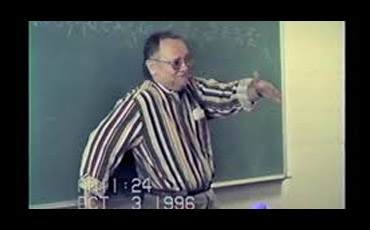
Jeffrey Hopkins: Seminar in Tsong-kha-pa’s The Essence of Eloquence on the Mind-Only School, Class # 11 (1996-10-03)
The lecture discusses the significance of the category of "imputed existence" (rtog pas brtag tsam du yod pa) in Cittamātra and Madhyamaka, before proceeding to contextualize Cittamātra & Yogācāra in the overall Buddhist tenet systems.
Recommended prior reading:
• Jeffrey Hopkins. Emptiness in the Mind-Only School of Buddhism, Dynamic Responses to Dzong-ka-ba’s The Essence of Eloquence, Volume 1. Berkeley: Univ. Calif. Pr. (1999), pp. 104-132, 271-280.
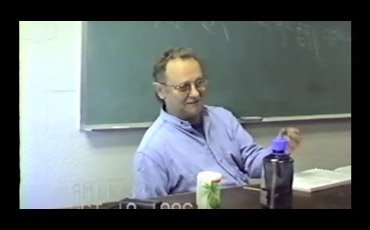
Jeffrey Hopkins: Seminar in Tsong-kha-pa’s The Essence of Eloquence on the Mind-Only School, Class # 12 (1996-10-10)
The lecture introduces Tsong-kha-pa's basic approach to presenting the Mind-Only system and the three natures beyond the "Sūtra Unravelling the Thought" (Saṃdhinirmocana-sūtra), and the significance of the works of the great Indian masters such as Asaṅga and others, both in relation to his overall presentation and in relation to his refutation of the ideas of the Jo-nang-pa schgolar Dol-po-pa Shes-rab-rgyal-mtshan. This is followed by an overview of the chapters of Tsong-kha-pa's text and in the process, touching on ancillary issues, such as the doctrine of the Three Wheels of the Dharma in relation to the periods in which the Buddha taught, which teachings actually correspond to the Three Wheels, tathāgatagarbha theory, etc.
Recommended prior reading:
• Jeffrey Hopkins. Emptiness in the Mind-Only School of Buddhism, Dynamic Responses to Dzong-ka-ba’s The Essence of Eloquence, Volume 1. Berkeley: Univ. Calif. Pr. (1999), pp. 104-132, 271-280.
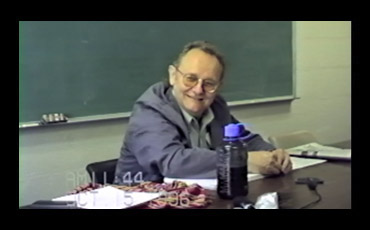
Jeffrey Hopkins: Seminar in Tsong-kha-pa’s The Essence of Eloquence on the Mind-Only School, Class # 13 (1996-10-15)
The lecture discusses Tsong-kha-pa's repudiation of presentations of Buddhist philosophy that amalgamate different Buddhist philosophical schools into one school, and proceeds to consider nihilism and the extremes of superimposition and annihilation, refuting the notion that the object of negation is language or words — both in the works of Asaṅga and in Yogācara and Madhyamaka in general — and the contents of Asaṅga's "Grounds of Bodhisattvas" (bodhisattva-bhūmi).
Recommended prior reading:
• Jeffrey Hopkins. Emptiness in the Mind-Only School of Buddhism, Dynamic Responses to Dzong-ka-ba’s The Essence of Eloquence, Volume 1. Berkeley: Univ. Calif. Pr. (1999), pp. 135-148, 283-290.
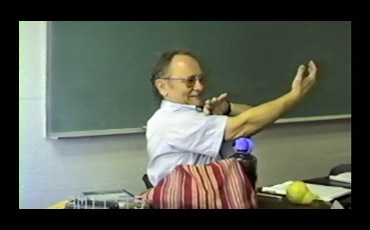
Jeffrey Hopkins: Seminar in Tsong-kha-pa’s The Essence of Eloquence on the Mind-Only School, Class # 14 (1996-10-17)
The lecture contains a discussion of the instances in Tson-kha-pa's text where he makes reference to Wön-ch'uk's commentary on the Sūtra Unraveling the Thought (Saṃdhinirmocana-sūtra), which tangetially includes a discussion of entities and attributes (ngo bo dang khyad pa), imputational natures that are imputations in the nature of entity and attribute (ngo bo dang khyad par du kun btags pa'i kun btags), and the meaning of establishment by way of own character (rang gi mtshan nyid kyis grub pa), and the referents of terms in the First and Third Turnings of the Wheel of the Dharma.
Recommended prior reading:
• Jeffrey Hopkins. Absorption in No External World, Dynamic Responses to Dzong-ka-ba’s The Essence of Eloquence, Volume 3. Berkeley: Univ. Calif. Pr. (2005), pp. 463-482.
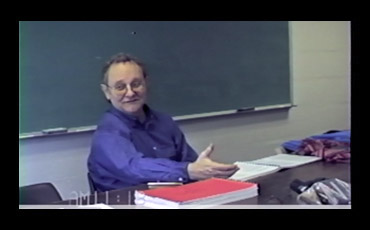
Jeffrey Hopkins: Seminar in Tsong-kha-pa’s The Essence of Eloquence on the Mind-Only School, Class # 15 (1996-10-22)
The lecture considers Asaṅga's "Compendium of Ascertainments" (*viniścaya-saṃgrahanī; rnam par gtan la dbab pa bsdu ba) and his arguments against the Middle Way (Mādhyamika) School. In that context, the meaning of several terms are discussed, including: the ultimate, ultimate truth, true existence, the object of negation, imputational existence, etc.
Recommended prior reading:
• Jeffrey Hopkins. Emptiness in the Mind-Only School of Buddhism, Dynamic Responses to Dzong-ka-ba’s The Essence of Eloquence, Volume 1. Berkeley: Univ. Calif. Pr. (1999), pp. 149-171, 291-301.
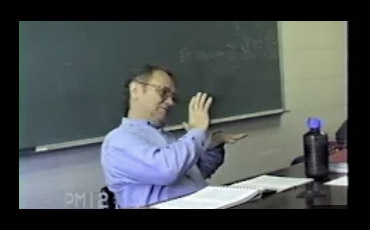
Jeffrey Hopkins: Seminar in Tsong-kha-pa’s The Essence of Eloquence on the Mind-Only School, Class # 16 (1996-10-24)
The lecture continues the discussion of Tsong-kha-pa's presentation of Asaṅga's "Compendium of Ascertainments" (viniścaya-saṃgrahanī; rnam par gtan la dbab pa bsdu ba) and specifically looks at the handling of complex vocabulary in the Mind-Only system such as what "serves as existing" (yod pa'i go chod), etc.
Recommended prior reading (re-read):
• Jeffrey Hopkins. Emptiness in the Mind-Only School of Buddhism, Dynamic Responses to Dzong-ka-ba’s The Essence of Eloquence, Volume 1. Berkeley: Univ. Calif. Pr. (1999), pp. 149-171, 291-301.
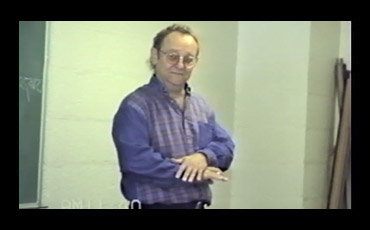
Jeffrey Hopkins: Seminar in Tsong-kha-pa’s The Essence of Eloquence on the Mind-Only School, Class # 17 (1996-10-29)
The lecture begins with a discussion of Tsong-kha-pa's presentation of Maitreya's "Ornament for the Mahāyāna Sūtras" (mahāyāna-sūtrālaṃkāra; theg pa chen po mdo sde'i rgyan) in relation to the Mind-Only school, which includes a discussion of Buddhist hermeneutics, the various meanings of "conventional existence," etc. This concludes with an overview of some of the subsequent chapters remaining to be read.
Recommended prior reading (re-read):
• Jeffrey Hopkins. Emptiness in the Mind-Only School of Buddhism, Dynamic Responses to Dzong-ka-ba’s The Essence of Eloquence, Volume 1. Berkeley: Univ. Calif. Pr. (1999), pp. 172-181, 302-304.
• Jeffrey Hopkins. Absorption in No External World, Dynamic Responses to Dzong-ka-ba’s The Essence of Eloquence, Volume 3. Berkeley: Univ. Calif. Pr. (2005), pp. 439-441, 448-455.
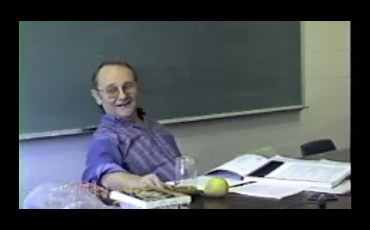
Jeffrey Hopkins: Seminar in Tsong-kha-pa’s The Essence of Eloquence on the Mind-Only School, Class # 18 (1996-10-31)
The lecture explores various topics such as: the difference between "established by way of its own character" and "established by way of its own character as the referent of terms and concepts", the difference between "established by way of its own character" and "existent from its own side", the meaning of "established by way of its own character" in Cittamātra vs. Madhyamaka, etc.
Recommended prior reading:
• Jeffrey Hopkins. Reflections on Reality, Dynamic Responses to Dzong-ka-ba’s The Essence of Eloquence, Volume 2. Berkeley: Univ. Calif. Pr. (2002), pp. 395-432.
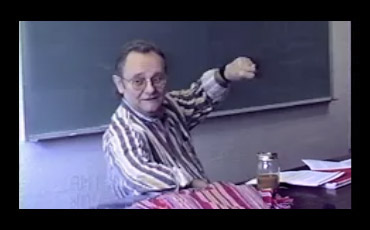
Jeffrey Hopkins: Seminar in Tsong-kha-pa’s The Essence of Eloquence on the Mind-Only School, Class # 19 (1996-11-05)
Beginning with student discussions, the lecture considers the problem of uncompounded space ('dus ma byas kyi nam mkha'; asaṃskṛtākāśa) both as categorized as one of the three natures (trisvabhāva) and with respect to which one can posit three natures, and by extension, the difficulty of positing an "other-powered nature" (gzhan dbang) with respect to uncompounded space.
Recommended prior reading:
• Jeffrey Hopkins. Absorption in No External World, Dynamic Responses to Dzong-ka-ba’s The Essence of Eloquence, Volume 3. Berkeley: Univ. Calif. Pr. (2005), pp. 50-73.
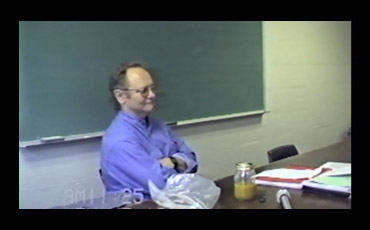
Jeffrey Hopkins: Seminar in Tsong-kha-pa’s The Essence of Eloquence on the Mind-Only School, Class # 20 (1996-11-07)
Continuing with student discussions, the lecture considers the opinions on Buddhist philosophy of Dol-po-pa Shes-rab-rgyal-mtshan (1292-1361). Some issues discussed in particular are: what appears to a sense consciousness, and the role of meaning-generalities (don spyi) in Cittamātra.
Recommended prior reading:
• Jeffrey Hopkins. Absorption in No External World, Dynamic Responses to Dzong-ka-ba’s The Essence of Eloquence, Volume 3. Berkeley: Univ. Calif. Pr. (2005), pp. 74-106.
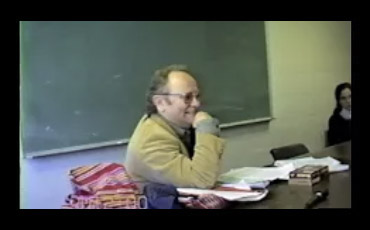
Jeffrey Hopkins: Seminar in Tsong-kha-pa’s The Essence of Eloquence on the Mind-Only School, Class # 21 (1996-11-12)
Continuing student discussions, the lecture considers some "other-emptiness" (gzhan stong) and Chinese presentations of the Mind-Only system. Some issues discussed in particular are: what appears to a sense consciousness, the relationship between Cittamātra and tathāgatagarbha theory, common mistaken assertions regarding imputational natures, and the use of the third volume ("Absorption in No External World") in studying Mind-Only.
Recommended prior reading:
• Jeffrey Hopkins. Absorption in No External World, Dynamic Responses to Dzong-ka-ba’s The Essence of Eloquence, Volume 3. Berkeley: Univ. Calif. Pr. (2005), pp. 107-146.
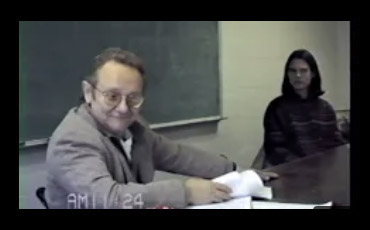
Jeffrey Hopkins: Seminar in Tsong-kha-pa’s The Essence of Eloquence on the Mind-Only School, Class # 22 (1996-11-14)
Continuing student discussions, the lecture considers Alex Wayman's presentation of Mind-Only Buddhism, and in the context of which discusses the term "unreal ideation" (abhūta parikalpa) in the texts attributed to Maitreya and its significance in presentations of Mind-Only, this is followed by a consideration of the presentation of the three natures (trisvabhāva) in Hsüan-tsang's "Treatise Establishing Cognition-only" (成唯識論, ch'eng wei shi lun, Taishō 1585) according to the translation of Louis de la Vallée Poussin.
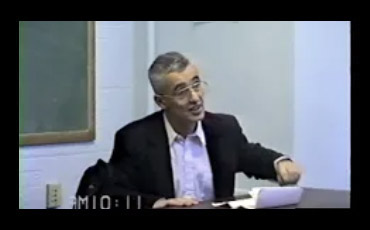
Jeffrey Hopkins: Seminar in Tsong-kha-pa’s The Essence of Eloquence on the Mind-Only School, Class # 23 (1996-11-15) - Georges Dreyfus (Guest Lecture)
Georges Dreyfus (Williams College) gives a guest lecture discussing of the place of Yogācāra in the Tibetan tradition (and its difference from Cittamātra), its role in describing ultimate reality in sutra and tantra, the categories of the Second Turning of the Wheel and Third Turning of the Wheel, the role of Yogācāra in the thought of Dolpopa Sherap Gyeltsen (dol po pa shes rab rgyal mtshan, 1292-1361), Shakya Chokden (shākya mchog ldan, ca. 1428-1507), Mipham Gyatso (mi pham rgya mtsho, 1846-1912), and others, as well as the range of views subsumed by the "other-emptiness" (gzhan stong) label.
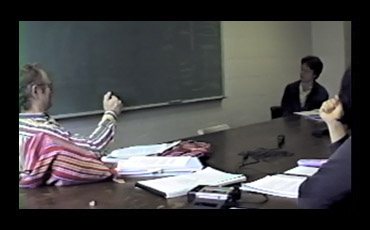
Jeffrey Hopkins: Seminar in Tsong-kha-pa’s The Essence of Eloquence on the Mind-Only School, Class # 24 (1996-11-19)
Continuing student discussions, the lecture considers Alan Sponberg's theory of the evolution of Yogācāra Buddhism in India and China, and its contrast with Tsong-kha-pa's system, and the different presentations of the three natures in both ontological and epistemological terms.
Recommended prior reading:
• Alan Sponberg. "The Trisvabhāva Doctrine in India & China: A Study of the Three Exegetical Models," Ryūkoku Daigaku Bukkyō Bunka Kenkyūjo Kiyō (= Bulletin of Buddhist Cultural Institute, Ryukoku University) 21 [1983]: 97-119.
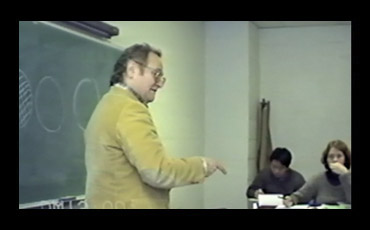
Jeffrey Hopkins: Seminar in Tsong-kha-pa’s The Essence of Eloquence on the Mind-Only School, Class # 25 (1996-11-21)
Concluding student discussions, the lecture considers Alan Sponberg's interpretation of the writings of K'uei-chi (窺基, 632-682 c.e.) in relation to Sponberg's theory of a "progressive model" of the three natures. This is followed by a discussion of his teacher, Hsüan-tsang (玄奘, 602-664), which leads into a discussion of the different ways Buddhist scriptures can be said to be definitive or interpretable.
Recommended prior reading:
• Jeffrey Hopkins. Reflections on Reality, Dynamic Responses to Dzong-ka-ba’s The Essence of Eloquence, Volume 2. Berkeley: Univ. Calif. Pr. (2002), pp. 409-432, 433-455, 459-489.
• Alan Sponberg. "The Trisvabhāva Doctrine in India & China: A Study of the Three Exegetical Models," Ryūkoku Daigaku Bukkyō Bunka Kenkyūjo Kiyō (= Bulletin of Buddhist Cultural Institute, Ryukoku University) 21 [1983]: 97-119.
• Alan Sponberg. "Meditation in Fa-hsiang Buddhism" in Traditions of Meditation in Chinese Buddhism. (Robert E Buswell, ed.) Honolulu: University of Hawaii Press, 1986, pp. 15-43
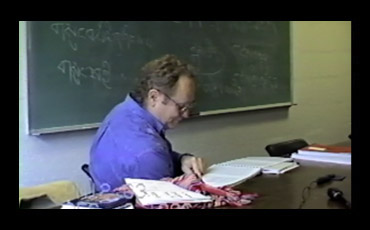
Jeffrey Hopkins: Seminar in Tsong-kha-pa’s The Essence of Eloquence on the Mind-Only School, Class # 26 (1996-12-03)
The lecture continues the discussion of the different ways Buddhist scriptures can be said to be definitive or interpretable--in terms of "the factual basis in [Buddha's] thought" (dgongs gzhi), "the thought [of the sutra]" (dgongs pa), "the purpose" (dgos pa), and "the damage to the literal meaning" (dngos la gnod byed)--followed by a discusion of how to posit the three natures with respect to any one phenomenon.
Recommended prior reading:
• Jeffrey Hopkins. Emptiness in the Mind-Only School of Buddhism, Dynamic Responses to Dzong-ka-ba’s The Essence of Eloquence, Volume 1. Berkeley: Univ. Calif. Press (1999), pp. 234-245.
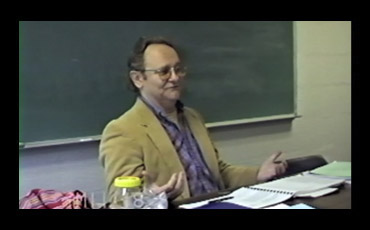
Jeffrey Hopkins: Seminar in Tsong-kha-pa’s The Essence of Eloquence on the Mind-Only School, Class # 27 (1996-12-05)
This lecture concludes the course, covering such topics as the two types of emptinesses in Mind-Only, the reasonings against an external world according to the Mind-Only School, the Mind-Only context of understanding calm abiding (śamatha; zhi gnas) and meditative equipoise (samāhita; mnyam bzhag), Dharmakīrti's reasoning for Mind-Only in relation to self-cognizing consciousnesses (rang rig), refuting partless particles as a rejection of the external world, and the presentation of the path in the Mind-Only system.
Recommended prior reading:
• Jeffrey Hopkins. Reflections on Reality, Dynamic Responses to Dzong-ka-ba’s The Essence of Eloquence, Volume 2. Berkeley: Univ. Calif. Pr. (2002), pp. 459-489.
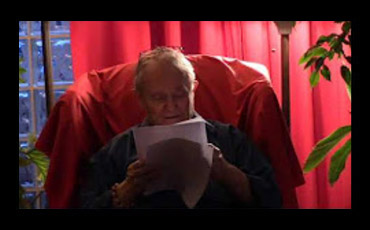
Jeffrey Hopkins: Mipam Gyatsho’s First Cycle on Fundamental Mind, Class # 1 (2017-08-31)
A talk given at Pema Tamdrin Ling (Burnaby, BC). Jeffrey Hopkins discusses the Nyingma view of the "Great Completeness" (rdzogs chen) as presented in Mipam Gyatsho’s First Cycle on Fundamental Mind.
Recommended prior reading:
Jeffrey Hopkins. Fundamental Mind: The Nyingma View of the Great Completeness. Ithaca: Snow Lion Publ., (2006).
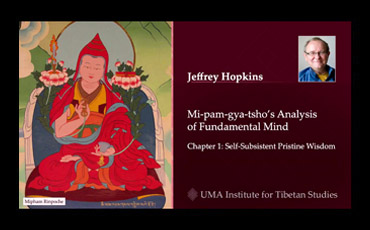
Jeffrey Hopkins: Mipam Gyatsho’s Analysis of Fundamental Mind, Class # 1 (2017-06-06)
The session starts by introducing the topic of the series through explaining the different translations of the title in order to bring a deeper understanding of the terminology. It continues with the analysis of Mi-pam's expression of worship and the promise of composition.
Recommended prior reading:
Jeffrey Hopkins. Mipam Gyatsho’s Primordial Enlightenment: The Nying-ma View of Luminosity and Emptiness, Analysis of Fundamental Mind, with Oral Commentary by Khetsun Sangpo. UMA Institute (2017), PDF; H.H. the Fourteenth Dalai Lama, and Jeffrey Hopkins, Heart of Meditation: Discovering Innermost Awareness. Boston: Shambhala (2016).
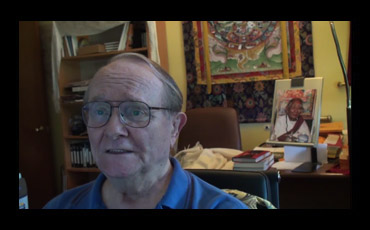
Jeffrey Hopkins: Mipam Gyatsho’s Analysis of Fundamental Mind, Class # 2 (2017-06-20)
The session discusses what is the main point of all the various doctrines, namely the fundamental mind of natural clear light, from within which all appearances of cyclic existence and nirvāṇa dawn.
Recommended prior reading:
Jeffrey Hopkins. Mipam Gyatsho’s Primordial Enlightenment: The Nying-ma View of Luminosity and Emptiness, Analysis of Fundamental Mind, with Oral Commentary by Khetsun Sangpo. UMA Institute (2017), PDF; H.H. the Fourteenth Dalai Lama, and Jeffrey Hopkins, Heart of Meditation: Discovering Innermost Awareness. Boston: Shambhala (2016).
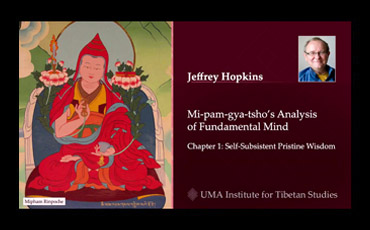
Jeffrey Hopkins: Mipam Gyatsho’s Analysis of Fundamental Mind, Class # 3 (2017-06-26)
The session compares two translations of Dharmakaya, the truth body and the body of attributes, along with giving the explanation of its division. Then it turns to the commentary by Khetsun Sangpo Rinpoche on how through "release" one becomes able to encounter the body of attributes of a Buddha that exists within oneself.
Recommended prior reading:
Jeffrey Hopkins. Mipam Gyatsho’s Primordial Enlightenment: The Nying-ma View of Luminosity and Emptiness, Analysis of Fundamental Mind, with Oral Commentary by Khetsun Sangpo. UMA Institute (2017), PDF; H.H. the Fourteenth Dalai Lama, and Jeffrey Hopkins, Heart of Meditation: Discovering Innermost Awareness. Boston: Shambhala (2016).
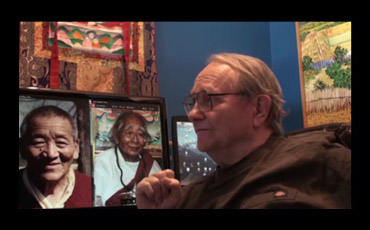
Jeffrey Hopkins: Mipam Gyatsho’s Analysis of Fundamental Mind, Class # 4 (2017-07-04)
The session first presents the three attributes of the ultimate mode of abiding: purity from the start, self-luminous spontaneity and all-pervasive compassion. The session then explains how from different viewpoints the ultimate mode of abiding is the foundational element, self-arisen pristine wisdom and the mind of enlightenment. It proceeds by providing further synonyms of the fundamental mind and concludes by addressing the question about the initial complexity of Nyingma's rich terminology.
Recommended prior reading:
Jeffrey Hopkins. Mipam Gyatsho’s Primordial Enlightenment: The Nying-ma View of Luminosity and Emptiness, Analysis of Fundamental Mind, with Oral Commentary by Khetsun Sangpo. UMA Institute (2017), PDF; H.H. the Fourteenth Dalai Lama, and Jeffrey Hopkins, Heart of Meditation: Discovering Innermost Awareness. Boston: Shambhala (2016).
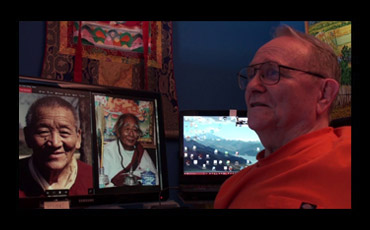
Jeffrey Hopkins: Mipam Gyatsho’s Analysis of Fundamental Mind, Class # 5 (2017-07-11)
The session begins with the topic of the fundamental innate mind of clear light, how to trigger it and why do we fear it. It then describes the eight levels of minds with which one needs to familiarize with in order to overcome the fear and eventually recognize our innermost awareness. The session continues by first showing how not realizing the noumenon makes beings wander in cyclic existence, and then compares that with realizing the noumenon through which everything dawns as primordially released and as not passed beyond the nature of buddha.
Recommended prior reading:
Jeffrey Hopkins. Mipam Gyatsho’s Primordial Enlightenment: The Nying-ma View of Luminosity and Emptiness, Analysis of Fundamental Mind, with Oral Commentary by Khetsun Sangpo. UMA Institute (2017), PDF; H.H. the Fourteenth Dalai Lama, and Jeffrey Hopkins, Heart of Meditation: Discovering Innermost Awareness. Boston: Shambhala (2016).
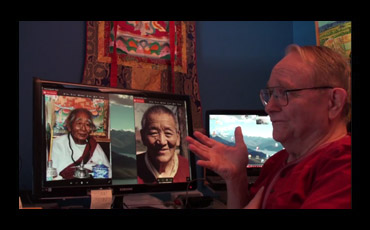
Jeffrey Hopkins: Mipam Gyatsho’s Analysis of Fundamental Mind, Class # 6 (2017-07-18)
The session enumerates the eight consciousnesses: the consciousnesses of the five doors, mental consciousness, afflicted mentality, and the basis-of-all, which is the storehouse accumulating the various seeds. Those are the phenomena of cyclic existence. The text and the class continues by differentiating mistaken sentient beings who do not know the inconceivable noumenon, from the yogis, who realize that all those mistaken minds are mistaken minds are the appearances, or dynamism, or sport of this inconceivable noumenon.
Recommended prior reading:
Jeffrey Hopkins. Mipam Gyatsho’s Primordial Enlightenment: The Nying-ma View of Luminosity and Emptiness, Analysis of Fundamental Mind, with Oral Commentary by Khetsun Sangpo. UMA Institute (2017), PDF; H.H. the Fourteenth Dalai Lama, and Jeffrey Hopkins, Heart of Meditation: Discovering Innermost Awareness. Boston: Shambhala (2016).
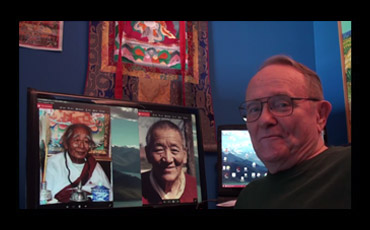
Jeffrey Hopkins: Mipam Gyatsho’s Analysis of Fundamental Mind, Class # 7 (2017-07-25)
The session explains the two classes of the Nyingma doctrines: the Word - the tantras brought to Tibet from India; and the Hidden Treasure Texts revealed by the treasure revealers. The session then goes on to the point that although when talking about the mode of appearance, it can be said that the basis itself has not already ripened into the fruit state, nevertheless this description just accords with how it seems in terms of appearance. The original basis though is always endowed with the ten powers and so forth, and these qualities become fully manifest when realizing the basis as it is.
Recommended prior reading:
Jeffrey Hopkins. Mipam Gyatsho’s Primordial Enlightenment: The Nying-ma View of Luminosity and Emptiness, Analysis of Fundamental Mind, with Oral Commentary by Khetsun Sangpo. UMA Institute (2017), PDF; H.H. the Fourteenth Dalai Lama, and Jeffrey Hopkins, Heart of Meditation: Discovering Innermost Awareness. Boston: Shambhala (2016).
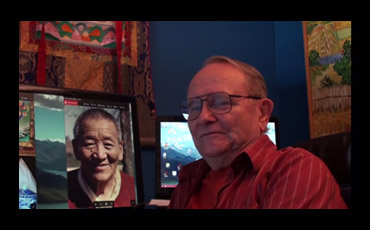
Jeffrey Hopkins: Mipam Gyatsho’s Analysis of Fundamental Mind, Class # 8 (2017-08-01)
Answering the question about the four reasonings, the session explains the reasoning of reliance, reasoning of performance of function, reasoning of tenable proof, and reasoning of nature. Special emphasis is given to the last reasoning which in the context of realizing and viewing all appearances as just naturally buddhafied is called a noumenal reasoning.
Recommended prior reading:
Jeffrey Hopkins. Mipam Gyatsho’s Primordial Enlightenment: The Nying-ma View of Luminosity and Emptiness, Analysis of Fundamental Mind, with Oral Commentary by Khetsun Sangpo. UMA Institute (2017), PDF; H.H. the Fourteenth Dalai Lama, and Jeffrey Hopkins, Heart of Meditation: Discovering Innermost Awareness. Boston: Shambhala (2016).
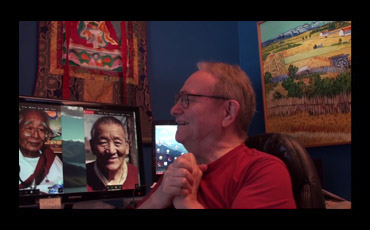
Jeffrey Hopkins: Mipam Gyatsho’s Analysis of Fundamental Mind, Class # 9 (2017-08-08)
The session first explains the process of coarsening of appearances through the eight stages. The session continues with the discussion about time and whether there is a beginning or not. It then turns to the questions of how do the appearances of the basis dawn from the basis, and how do the existence of the marks, beauties and so forth manifestly exist (or not) in the basis.
Recommended prior reading:
Jeffrey Hopkins. Mipam Gyatsho’s Primordial Enlightenment: The Nying-ma View of Luminosity and Emptiness, Analysis of Fundamental Mind, with Oral Commentary by Khetsun Sangpo. UMA Institute (2017), PDF; H.H. the Fourteenth Dalai Lama, and Jeffrey Hopkins, Heart of Meditation: Discovering Innermost Awareness. Boston: Shambhala (2016).
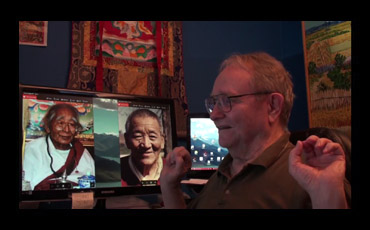
Jeffrey Hopkins: Mipam Gyatsho’s Analysis of Fundamental Mind, Class # 10 (2017-08-15)
The session reviews and expands on the different explanations of Buddhist cosmology, following with the reflection in what way the karmic seeds act as the causes for the world we live in. Then it compares the differences and similarities between the Nyingma and Gelug description of direct realization of emptiness and of Buddhahood.
Recommended prior reading:
Jeffrey Hopkins. Mipam Gyatsho’s Primordial Enlightenment: The Nying-ma View of Luminosity and Emptiness, Analysis of Fundamental Mind, with Oral Commentary by Khetsun Sangpo. UMA Institute (2017), PDF; H.H. the Fourteenth Dalai Lama, and Jeffrey Hopkins, Heart of Meditation: Discovering Innermost Awareness. Boston: Shambhala (2016).
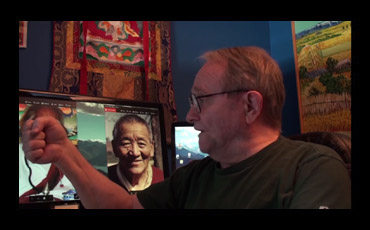
Jeffrey Hopkins: Mipam Gyatsho’s Analysis of Fundamental Mind, Class # 11 (2017-08-22)
The session opens up a new chapter with the section on the the Original Protector, or Samantabhadra. Then it returns to the beginning of the chapter, which starts with a question about the vast attributes of a Buddha’s bodies within the basis. Are these attributes only factors which are suitable to dawn, or does the basis already abide primordially endowed with them?
Recommended prior reading:
Jeffrey Hopkins. Mipam Gyatsho’s Primordial Enlightenment: The Nying-ma View of Luminosity and Emptiness, Analysis of Fundamental Mind, with Oral Commentary by Khetsun Sangpo. UMA Institute (2017), PDF; H.H. the Fourteenth Dalai Lama, and Jeffrey Hopkins, Heart of Meditation: Discovering Innermost Awareness. Boston: Shambhala (2016).
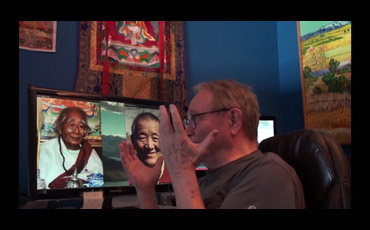
Jeffrey Hopkins: Mipam Gyatsho’s Analysis of Fundamental Mind, Class # 12 (2017-08-29)
The session gives the basic structure of the second chapter, which has three basic movements: the delineation of philosophical view, presentation of Initial Buddha, and explanation of how other Buddhas become enlightend. Then it turns to the first movement, which begins with the qualm whether the basis is asserted as only a buddha of natural purity but is not buddhafied as an entity of the final fruit.
Recommended prior reading:
Jeffrey Hopkins. Mipam Gyatsho’s Primordial Enlightenment: The Nying-ma View of Luminosity and Emptiness, Analysis of Fundamental Mind, with Oral Commentary by Khetsun Sangpo. UMA Institute (2017), PDF; H.H. the Fourteenth Dalai Lama, and Jeffrey Hopkins, Heart of Meditation: Discovering Innermost Awareness. Boston: Shambhala (2016).
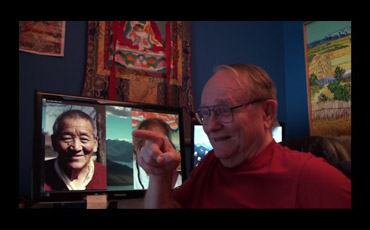
Jeffrey Hopkins: Mipam Gyatsho’s Analysis of Fundamental Mind, Class # 13 (2017-08-29)
The session begins by stating that in the primeval basis there is no differentiation into the two, Buddhas and sentient beings. However, even at the time of the fluctuation of appearances of the basis, sentient beings are established as pure. They can be established as pure through various means - by seeing them as impermanent, or as one's friend, but especially by regarding them as primordially devoid of obstruction in the manner of the emptiness that is natural purity.
Recommended prior reading:
Jeffrey Hopkins. Mipam Gyatsho’s Primordial Enlightenment: The Nying-ma View of Luminosity and Emptiness, Analysis of Fundamental Mind, with Oral Commentary by Khetsun Sangpo. UMA Institute (2017), PDF; H.H. the Fourteenth Dalai Lama, and Jeffrey Hopkins, Heart of Meditation: Discovering Innermost Awareness. Boston: Shambhala (2016).
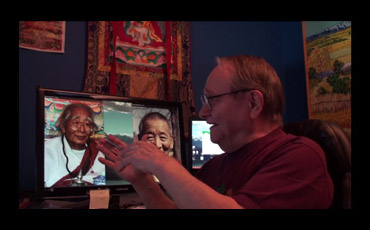
Jeffrey Hopkins: Mipam Gyatsho’s Analysis of Fundamental Mind, Class # 14 (2017-09-26)
The session compares the difference between the Gelukpas' and Nyingmapas' dominant perspectives. While Geluk usually puts more emphasis on the ordinary perspective, Nyingma focuses more on the noumenon that is already fully endowed with uncontaminated attributes of a Buddha. This distinction also carries over on how we practice the deity yoga - are we really the deities or are we just thinking that we are?
Recommended prior reading:
Jeffrey Hopkins. Mipam Gyatsho’s Primordial Enlightenment: The Nying-ma View of Luminosity and Emptiness, Analysis of Fundamental Mind, with Oral Commentary by Khetsun Sangpo. UMA Institute (2017), PDF; H.H. the Fourteenth Dalai Lama, and Jeffrey Hopkins, Heart of Meditation: Discovering Innermost Awareness. Boston: Shambhala (2016).

Jeffrey Hopkins: Mipam Gyatsho’s Analysis of Fundamental Mind, Class # 15 (2017-10-03)
The session presents the Nyingmapas' criticism of the Gelukpas' assertion that the most subtle consciousness is impermanent and compounded. In the discussion about this most subtle consciousness, the fundamental mind of clear light, the lecture outlines the eight levels of minds: experience of mirage, experience of smoke, experience of fireflies within smoke, experience of first fluttering and then steady flame, mind of vivid white appearance, mind of vivid red or orange increase of appearance, vivid black, extremely subtle mind of clear light.
Recommended prior reading:
Jeffrey Hopkins. Mipam Gyatsho’s Primordial Enlightenment: The Nying-ma View of Luminosity and Emptiness, Analysis of Fundamental Mind, with Oral Commentary by Khetsun Sangpo. UMA Institute (2017), PDF; H.H. the Fourteenth Dalai Lama, and Jeffrey Hopkins, Heart of Meditation: Discovering Innermost Awareness. Boston: Shambhala (2016).
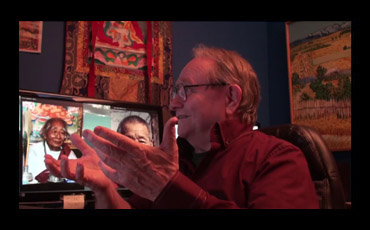
Jeffrey Hopkins: Mipam Gyatsho’s Analysis of Fundamental Mind, Class # 16 (2017-10-10)
The session compares the different approach to valid estabalishment by Gelug and Nyingma. Whereas for Nyingma everything is pure, and it is just from the mode of appearance that phenomena seem impure, for Gelug phenomena are validly established as impure. The lecture expands on the reasons for Gelug's approach, and then goes on to the last part of the chapter's first movement.
Recommended prior reading:
Jeffrey Hopkins. Mipam Gyatsho’s Primordial Enlightenment: The Nying-ma View of Luminosity and Emptiness, Analysis of Fundamental Mind, with Oral Commentary by Khetsun Sangpo. UMA Institute (2017), PDF; H.H. the Fourteenth Dalai Lama, and Jeffrey Hopkins, Heart of Meditation: Discovering Innermost Awareness. Boston: Shambhala (2016).
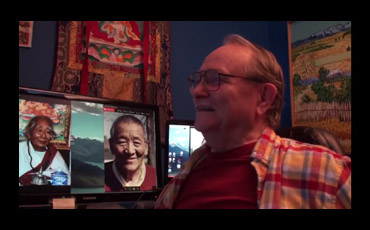
Jeffrey Hopkins: Mipam Gyatsho’s Analysis of Fundamental Mind, Class # 17 (2017-10-17)
The session reviews what does it mean that cultivating the path is more familiarization than meditation. The lecture then continues with the discussion about Samantabhadra, and the unique way how he was released into the stronghold of the noumenon.
Recommended prior reading:
Jeffrey Hopkins. Mipam Gyatsho’s Primordial Enlightenment: The Nying-ma View of Luminosity and Emptiness, Analysis of Fundamental Mind, with Oral Commentary by Khetsun Sangpo. UMA Institute (2017), PDF; H.H. the Fourteenth Dalai Lama, and Jeffrey Hopkins, Heart of Meditation: Discovering Innermost Awareness. Boston: Shambhala (2016).
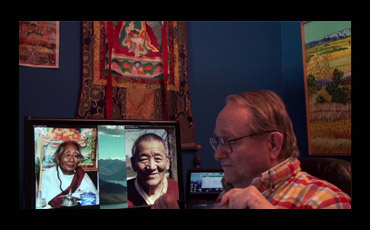
Jeffrey Hopkins: Mipam Gyatsho’s Analysis of Fundamental Mind, Class # 18 (2017-10-31)
The lecture begins with a discussion about the nature of beings who are different from Initial Buddha. The text points out that even though such beings have generated mistake, their situation should not be taken as predominant. Since there is no mistake in the basis, they are also primordially buddhafied. Then, a question arises - if intrinsic awareness is primordially buddha, then how does mistake arise and who mistakes?
Recommended prior reading:
Jeffrey Hopkins. Mipam Gyatsho’s Primordial Enlightenment: The Nying-ma View of Luminosity and Emptiness, Analysis of Fundamental Mind, with Oral Commentary by Khetsun Sangpo. UMA Institute (2017), PDF; H.H. the Fourteenth Dalai Lama, and Jeffrey Hopkins, Heart of Meditation: Discovering Innermost Awareness. Boston: Shambhala (2016).
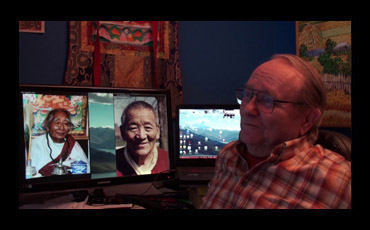
Jeffrey Hopkins: Mipam Gyatsho’s Analysis of Fundamental Mind, Class # 19 (2017-11-21)
The Lecture addresses the question whether Mipham will return to our world or merely send his emantions and what might be the difference. Lecture connects the issue with an assertion by Asanga about the three final vehicles. Returning to the text, the lecture then continues with the enumeration of several mistaken apprehensions of this system.
Recommended prior reading:
Jeffrey Hopkins. Mipam Gyatsho’s Primordial Enlightenment: The Nying-ma View of Luminosity and Emptiness, Analysis of Fundamental Mind, with Oral Commentary by Khetsun Sangpo. UMA Institute (2017), PDF; H.H. the Fourteenth Dalai Lama, and Jeffrey Hopkins, Heart of Meditation: Discovering Innermost Awareness. Boston: Shambhala (2016).
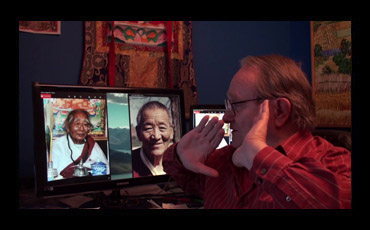
Jeffrey Hopkins: Mipam Gyatsho’s Analysis of Fundamental Mind, Class # 20 (2017-11-28)
The lecture addresses a few Nyingma critiques of other positions, such as holding that common sentient beings are not primordially endowed with Buddha attributes; holding that beings only have a potential for Buddha attributes; thinking during generation-stage that we are not actual Buddhas etc.
Recommended prior reading:
Jeffrey Hopkins. Mipam Gyatsho’s Primordial Enlightenment: The Nying-ma View of Luminosity and Emptiness, Analysis of Fundamental Mind, with Oral Commentary by Khetsun Sangpo. UMA Institute (2017), PDF; H.H. the Fourteenth Dalai Lama, and Jeffrey Hopkins, Heart of Meditation: Discovering Innermost Awareness. Boston: Shambhala (2016).
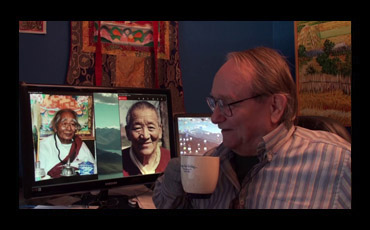
Jeffrey Hopkins: Mipam Gyatsho’s Analysis of Fundamental Mind, Class # 21 (2017-12-05)
The lecture continues the enumeration of Nyingma critiques of other positions. The lecture also talks about the 5 types of dualism: subject and object, appearance of inherent existence, meaning generalities, conventionalities, and difference.
Recommended prior reading:
Jeffrey Hopkins. Mipam Gyatsho’s Primordial Enlightenment: The Nying-ma View of Luminosity and Emptiness, Analysis of Fundamental Mind, with Oral Commentary by Khetsun Sangpo. UMA Institute (2017), PDF; H.H. the Fourteenth Dalai Lama, and Jeffrey Hopkins, Heart of Meditation: Discovering Innermost Awareness. Boston: Shambhala (2016).
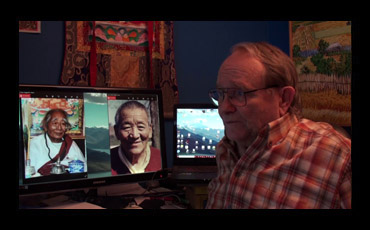
Jeffrey Hopkins: Mipam Gyatsho’s Analysis of Fundamental Mind, Class # 22 (2017-12-12)
The series turns to the part of Jam-yang-shay-ba’s Great Exposition of Buddhist and Non-Buddhist Views on the Nature of Reality wherein the fruitional Buddha ground is explained.
Recommended prior reading:
Jeffrey Hopkins. Mipam Gyatsho’s Primordial Enlightenment: The Nying-ma View of Luminosity and Emptiness, Analysis of Fundamental Mind, with Oral Commentary by Khetsun Sangpo. UMA Institute (2017), PDF; Jeffrey Hopkins, Maps of the Profound. Ithaca: Snow Lion Publ. (2003), pp. 981-987.
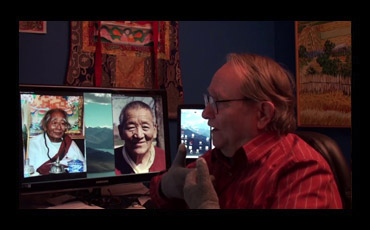
Jeffrey Hopkins: Mipam Gyatsho’s Analysis of Fundamental Mind, Class # 23 (2017-12-19)
The series continues with Jam-yang-shay-ba’s Great Exposition of Buddhist and Non-Buddhist Views on the Nature of Reality wherein the fruitional Buddha ground is explained. The class talks about the two modes of perception of a Buddha, and the stoppage of conceptual minds and mental factors.
Recommended prior reading:
Jeffrey Hopkins. Mipam Gyatsho’s Primordial Enlightenment: The Nying-ma View of Luminosity and Emptiness, Analysis of Fundamental Mind, with Oral Commentary by Khetsun Sangpo. UMA Institute (2017), PDF; Jeffrey Hopkins, Maps of the Profound. Ithaca: Snow Lion Publ. (2003), pp. 988-993.
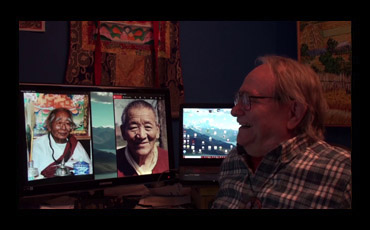
Jeffrey Hopkins: Mipam Gyatsho’s Analysis of Fundamental Mind, Class # 24 (2017-12-26)
The series continues with Jam-yang-shay-ba’s Great Exposition of Buddhist and Non-Buddhist Views on the Nature of Reality wherein the fruitional Buddha ground is explained. The class covers the nature body, the wisdom truth body, enjoyment body, and emanation body.
Recommended prior reading:
Jeffrey Hopkins. Mipam Gyatsho’s Primordial Enlightenment: The Nying-ma View of Luminosity and Emptiness, Analysis of Fundamental Mind, with Oral Commentary by Khetsun Sangpo. UMA Institute (2017), PDF; Jeffrey Hopkins, Maps of the Profound. Ithaca: Snow Lion Publ. (2003), pp. 993-1002.
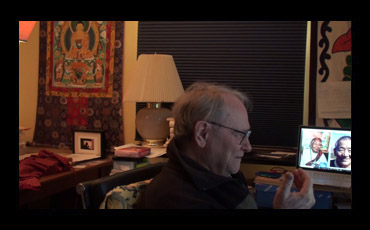
Jeffrey Hopkins: Mipam Gyatsho’s Analysis of Fundamental Mind, Class # 25 (2018-01-09)
The series continues with Jam-yang-shay-ba’s Great Exposition of Buddhist and Non-Buddhist Views on the Nature of Reality wherein the fruitional Buddha ground is explained. The class covers the nature body, the wisdom truth body, enjoyment body, and emanation body.
Recommended prior reading:
Jeffrey Hopkins. Mipam Gyatsho’s Primordial Enlightenment: The Nying-ma View of Luminosity and Emptiness, Analysis of Fundamental Mind, with Oral Commentary by Khetsun Sangpo. Chapter 3. UMA Institute (2017), PDF; Jeffrey Hopkins, Maps of the Profound. Ithaca: Snow Lion Publ. (2003), pp. 1003-1008.
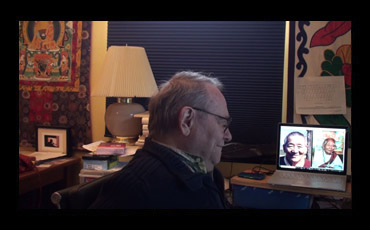
Jeffrey Hopkins: Mipam Gyatsho’s Analysis of Fundamental Mind, Class # 26 (2018-01-16)
Continuing Mipam Gyatsho’s Analysis of Fundamental Mind the class makes an overview of the remaining movements of the third chapter. Then it proceeds to the description of the characteristics of the path of release, and the means of realizing the noumenon, which starts by mental consciousness being introduced to and then identifying the noumenon. The text states that this mentality doesn't involve different apprehended-object and apprehending-subject upon which a comparison with Gelug's presentation of this issue is drawn.
Recommended prior reading:
Jeffrey Hopkins. Mipam Gyatsho’s Primordial Enlightenment: The Nying-ma View of Luminosity and Emptiness, Analysis of Fundamental Mind, with Oral Commentary by Khetsun Sangpo. Chapter 3. UMA Institute (2017), PDF.
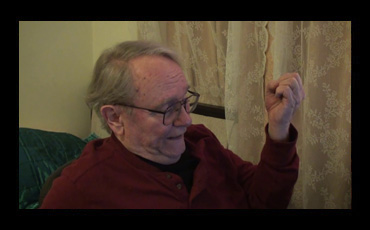
Jeffrey Hopkins: Mipam Gyatsho’s Analysis of Fundamental Mind, Class # 27 (2018-02-22)
The class provides a short overview of the topics covered in the last class, and goes into the explanation of the three keys. First of the three keys is pointing out and identifying, which means that one is introduced to intrinsic awareness, the fundamental mind, by one's lama. The second key is sustaining its continuum, sustaining the experience of it. The third key are three techniques or ways of how conceptuality dawns and self-disappears.
Recommended prior reading:
Jeffrey Hopkins. Mipam Gyatsho’s Primordial Enlightenment: The Nying-ma View of Luminosity and Emptiness, Analysis of Fundamental Mind, with Oral Commentary by Khetsun Sangpo. Chapter 3. UMA Institute (2017), PDF.
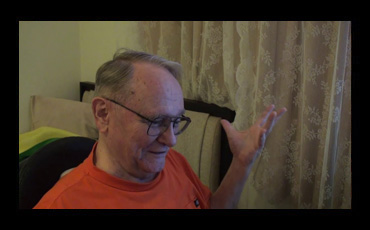
Jeffrey Hopkins: Mipam Gyatsho’s Analysis of Fundamental Mind, Class # 28 (2018-03-06)
The class starts with a short story from life of Patrul Rinpoche, when he undertook a job of simple sweeper before his disciples found him. Then the class provides a review of the three keys. Through meditation, a practitioner gains familiarization with the noumenal foundational clear light. The class continues with the Nyingma's presentation of the dissolution of increasingly subtle consciousnesses.
Recommended prior reading:
Jeffrey Hopkins. Mipam Gyatsho’s Primordial Enlightenment: The Nying-ma View of Luminosity and Emptiness, Analysis of Fundamental Mind, with Oral Commentary by Khetsun Sangpo. Chapter 3. UMA Institute (2017), PDF.
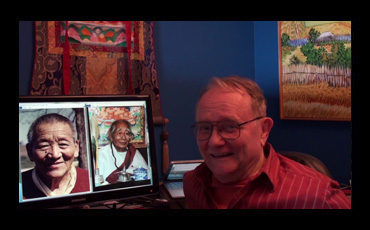
Jeffrey Hopkins: Mipam Gyatsho’s Analysis of Fundamental Mind, Class # 29 (2018-03-20)
The class continues with the description of the path of release, explaining the three pollutants which obscure one's own face, clear light, the inconceivable noumenon. The text then turns to the path of method where practitioners engage in various tantric techniques such as practicing the generation stage, and completion stage. Through successfully following these techniques, a visionary experience like a cloudless sky is generated. While this is not an actual foundational clear light, it is partially similar to it, and through familiarizing with it again and again it eventually becomes the realizational actual clear light.
Recommended prior reading:
Jeffrey Hopkins. Mipam Gyatsho’s Primordial Enlightenment: The Nying-ma View of Luminosity and Emptiness, Analysis of Fundamental Mind, with Oral Commentary by Khetsun Sangpo. Chapter 3. UMA Institute (2017), PDF.
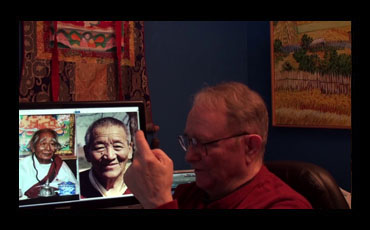
Jeffrey Hopkins: Mipam Gyatsho’s Analysis of Fundamental Mind, Class # 30 (2018-03-27)
The class continues with explanation how through increasing familiarization with one-pointed attention to the fundamental immutable noumenal clear light, yogis make progress to the point where the the actual clear light of true realization is reached. The text then explains how to utilize the sleep process in order to induce the visionary experiences of the three appearances and something partially similar to clear light like pure space. The class finishes with the mention of the three types of space: the external space which is the sky in a vast view, internal space which is our usual empty mind, and secret space which is empty intrinsic awareness itself.
Recommended prior reading:
Jeffrey Hopkins. Mipam Gyatsho’s Primordial Enlightenment: The Nying-ma View of Luminosity and Emptiness, Analysis of Fundamental Mind, with Oral Commentary by Khetsun Sangpo. Chapter 3. UMA Institute (2017), PDF.
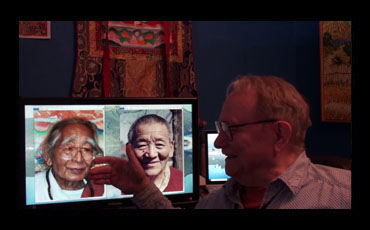
Jeffrey Hopkins: Mipam Gyatsho’s Analysis of Fundamental Mind, Class # 31 (2018-04-03)
The class starts with a short explanation of what self-empty and other-empty means in Geluk. Then it continues with the subject of the three types of space and how to utilize the mixing of external, internal, and secret space in order to make a swift progress on the path which would otherwise take much longer to attain. Through such practices one first obtains visionary experiences (nyams). When these visionary experiences progress to higher and higher levels, the actual realizational clear light can dawn.
Recommended prior reading:
Jeffrey Hopkins. Mipam Gyatsho’s Primordial Enlightenment: The Nying-ma View of Luminosity and Emptiness, Analysis of Fundamental Mind, with Oral Commentary by Khetsun Sangpo. Chapter 3. UMA Institute (2017), PDF.
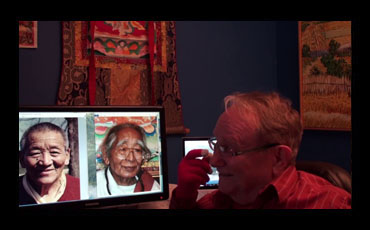
Jeffrey Hopkins: Mipam Gyatsho’s Analysis of Fundamental Mind, Class # 32 (2018-04-10)
The class starts by Jeffrey Hopkins sharing some entertaining stories about his teachers. Then the class turns to the explanation of the meditation on emptiness with regular, or common, mentality. Although through such method is in the manner of apprehended-object and apprehending-subject and the object is like a moon in a painting, such approach is not to be rejected but should be considered as an important step on the path.
Recommended prior reading:
Jeffrey Hopkins. Mipam Gyatsho’s Primordial Enlightenment: The Nying-ma View of Luminosity and Emptiness, Analysis of Fundamental Mind, with Oral Commentary by Khetsun Sangpo. Chapter 3. UMA Institute (2017), PDF.
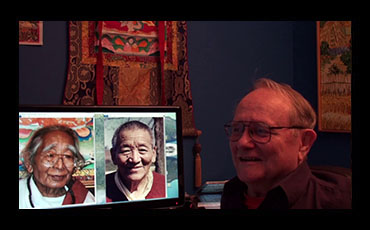
Jeffrey Hopkins: Mipam Gyatsho’s Analysis of Fundamental Mind, Class # 33 (2018-04-17)
The class discusses the topic of the Mantra path of seeing which occurs upon direct realization of the Great Seal or Great Completeness. A question arises that if one has manifestly perceived the Great Completeness and if this is called the path of seeing of Mantra, why does one not have any of these twelve sets of one hundred wonderful attributes?
Recommended prior reading:
Jeffrey Hopkins. Mipam Gyatsho’s Primordial Enlightenment: The Nying-ma View of Luminosity and Emptiness, Analysis of Fundamental Mind, with Oral Commentary by Khetsun Sangpo. Chapter 3. UMA Institute (2017), PDF.
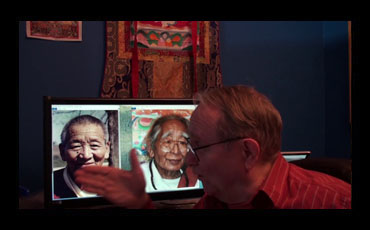
Jeffrey Hopkins: Mipam Gyatsho’s Analysis of Fundamental Mind, Class # 34 (2018-04-24)
The class discusses different levels of realization of emptiness, and how already the so-called lower levels of inferential realization of emptiness occurring on the path of accumulation can have an amazing impact - the power of realization can even allow the yogi to walk through walls. Further, the class describes the manner in which the sharp Bodhisattvas proceed on the path to Enlightenment. Then the class turns to the text, contrasting the fundamental mind and subtle mind.
Recommended prior reading:
Jeffrey Hopkins. Mipam Gyatsho’s Primordial Enlightenment: The Nying-ma View of Luminosity and Emptiness, Analysis of Fundamental Mind, with Oral Commentary by Khetsun Sangpo. Chapter 3. UMA Institute (2017), PDF.
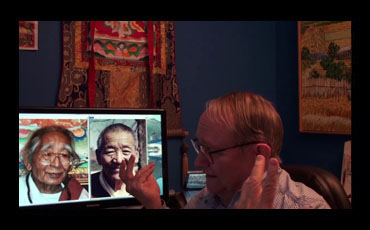
Jeffrey Hopkins: Mipam Gyatsho’s Analysis of Fundamental Mind, Class # 35 (2018-05-01)
Simultaneous (Sudden) and Gradual Enlightenment in Nyingma By Khetsun Sangpo Rinpoche, part 1.
To study the topic of simultaneous and gradual enlightenment in more detail, the class turns to the short text called "Simultaneous (Sudden) and Gradual Enlightenment in Nyingma", which is a collection of the oral teachings given by Khetsun Sangpo. Although the topics of this text were secret in the past, Khetsun Sangpo explains why Nyingma lamas decided to start to talk more openly about the topics such as Great Completeness, breakthrough, leapover etc.
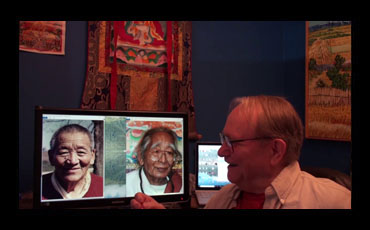
Jeffrey Hopkins: Mipam Gyatsho’s Analysis of Fundamental Mind, Class # 36 (2018-05-22)
Simultaneous (Sudden) and Gradual Enlightenment in Nyingma By Khetsun Sangpo Rinpoche, part 2.
The text compares the two types of practitioners of Great Completeness. One who is released immediately after the lama’s quintessential instruction is a simultaneous person. If this does not occur, one enters the gradual way and is called a gradualist. The text also relates a story about Atisha, and how a seemingly strange woman was identifying the base to him.
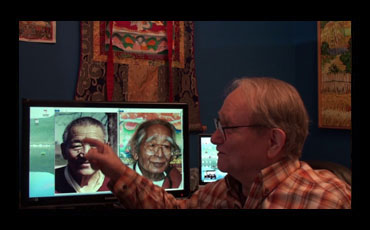
Jeffrey Hopkins: Mipam Gyatsho’s Analysis of Fundamental Mind, Class # 37 (2018-05-29)
Simultaneous (Sudden) and Gradual Enlightenment in Nyingma By Khetsun Sangpo Rinpoche, part 3.
The text gives another example of a pointing out, where a practitioner tries to examine from where the mind arises, where it dwells, and into what it ceases. Upon such examination, a practitioner can arrive at the empty expanse that is the mode of being of the mind, complete with all the auspicious Buddha attributes.
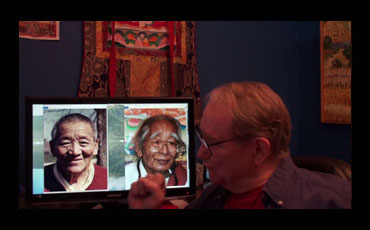
Jeffrey Hopkins: Mipam Gyatsho’s Analysis of Fundamental Mind, Class # 38 (2018-06-05)
Simultaneous (Sudden) and Gradual Enlightenment in Nyingma By Khetsun Sangpo Rinpoche, part 4.
The text compares the two lineages with regard to the style of identification, one in terms of breakthrough and one in terms of spontaneous leapover. Whereas breakthrough begins with identification of empty reality, leapover begins with identification of a divine body and wisdom.
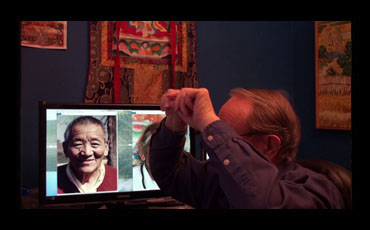
Jeffrey Hopkins: Mipam Gyatsho’s Analysis of Fundamental Mind, Class # 39 (2018-06-12)
Simultaneous (Sudden) and Gradual Enlightenment in Nyingma By Khetsun Sangpo Rinpoche, part 5.
The class finishes Khetsun Sangpo's text "Simultaneous (Sudden) and Gradual Enlightenment in Nyingma" with the description of the practice of leapover, the appearances and experiences which accompany it and the dangers of mixing with sinful persons.
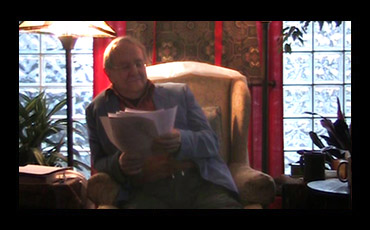
Jeffrey Hopkins: Nāgārjuna’s Precious Garland of Advice for a King, Class # 1 (2018-06-07)
The session starts with an identification of the three dramatic changes in the Snow Lion edition of Nāgārjuna’s Precious Garland. The first change is an 84 page Analysis in five chapters: the first chapter presents Nāgārjuna’s history over a great many lifetimes of altruistic endeavor, and the other four chapters present the content of Nāgārjuna’s poem by way of its major themes. The second change is a re-rendering of the poem itself, freed from an editor’s rules of syllable count for rigid poetic meter and from other problems in the first edition. The third change is inclusion of the edited Tibetan text. The talk then expands on Nāgārjuna’s attitude toward giving frank advice.
Recommended prior reading:
Jeffrey Hopkins, Nāgārjuna's Precious Garland: Buddhist Advice for Living and Liberation. Ithaca: Snow Lion Publ. (2007), pp. 22-24.
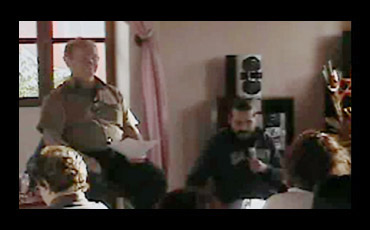
Jeffrey Hopkins: Seminar and Meditation on the Great Completeness, Session # 1 (2009-01-16)
This series of lectures presents an introduction to the practice of the "Great Completeness" (rdzogs chen) found in the Nyingma school of Tibetan Buddhism. The talks are in English with Spanish translation by Andres Montano.
Recommended prior reading:
Jeffrey Hopkins. Fundamental Mind: The Nyingma View of the Great Completeness with oral commentary by Khetsun Sangpo Rinpoche. Ithaca: Snow Lion Publications (2006).
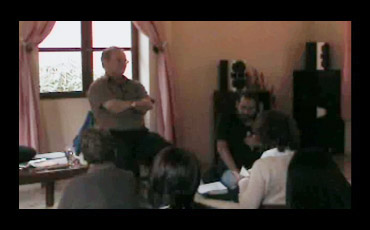
Jeffrey Hopkins: Seminar and Meditation on the Great Completeness, Session # 2 (2009-01-16)
This series of lectures presents an introduction to the practice of the "Great Completeness" (rdzogs chen) found in the Nyingma school of Tibetan Buddhism. The talks are in English with Spanish translation by Andres Montano.
Recommended prior reading:
Jeffrey Hopkins. Fundamental Mind: The Nyingma View of the Great Completeness with oral commentary by Khetsun Sangpo Rinpoche. Ithaca: Snow Lion Publications (2006).
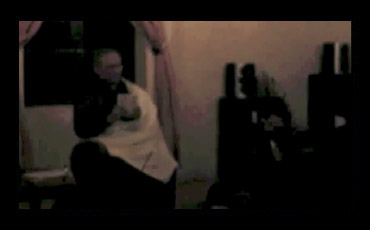
Jeffrey Hopkins: Seminar and Meditation on the Great Completeness, Session # 3 (2009-01-16)
This series of lectures presents an introduction to the practice of the "Great Completeness" (rdzogs chen) found in the Nyingma school of Tibetan Buddhism. The talks are in English with Spanish translation by Andres Montano.
Recommended prior reading:
Jeffrey Hopkins. Fundamental Mind: The Nyingma View of the Great Completeness with oral commentary by Khetsun Sangpo Rinpoche. Ithaca: Snow Lion Publications (2006).
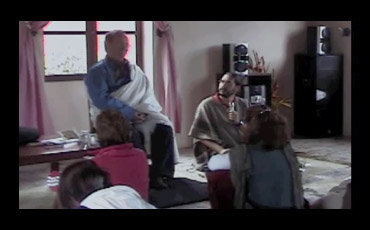
Jeffrey Hopkins: Seminar and Meditation on the Great Completeness, Session # 4 (2009-01-17)
This series of lectures presents an introduction to the practice of the "Great Completeness" (rdzogs chen) found in the Nyingma school of Tibetan Buddhism. The talks are in English with Spanish translation by Andres Montano.
Recommended prior reading:
Jeffrey Hopkins. Fundamental Mind: The Nyingma View of the Great Completeness with oral commentary by Khetsun Sangpo Rinpoche. Ithaca: Snow Lion Publications (2006).
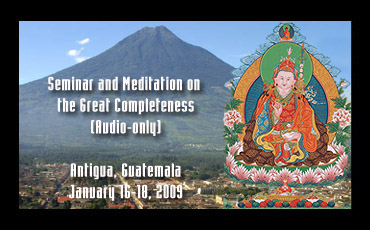
Jeffrey Hopkins: Seminar and Meditation on the Great Completeness, Session # 5 (Audio-only) (2009-01-17)
This series of lectures presents an introduction to the practice of the "Great Completeness" (rdzogs chen) found in the Nyingma school of Tibetan Buddhism. The talks are in English with Spanish translation by Andres Montano.
Recommended prior reading:
Jeffrey Hopkins. Fundamental Mind: The Nyingma View of the Great Completeness with oral commentary by Khetsun Sangpo Rinpoche. Ithaca: Snow Lion Publications (2006).
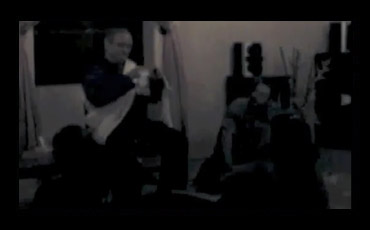
Jeffrey Hopkins: Seminar and Meditation on the Great Completeness, Session # 6 (2009-01-17)
This series of lectures presents an introduction to the practice of the "Great Completeness" (rdzogs chen) found in the Nyingma school of Tibetan Buddhism. The talks are in English with Spanish translation by Andres Montano.
Recommended prior reading:
Jeffrey Hopkins. Fundamental Mind: The Nyingma View of the Great Completeness with oral commentary by Khetsun Sangpo Rinpoche. Ithaca: Snow Lion Publications (2006).
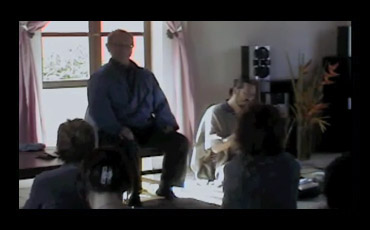
Jeffrey Hopkins: Seminar and Meditation on the Great Completeness, Session # 7 (2009-01-18)
This series of lectures presents an introduction to the practice of the "Great Completeness" (rdzogs chen) found in the Nyingma school of Tibetan Buddhism. The talks are in English with Spanish translation by Andres Montano.
Recommended prior reading:
Jeffrey Hopkins. Fundamental Mind: The Nyingma View of the Great Completeness with oral commentary by Khetsun Sangpo Rinpoche. Ithaca: Snow Lion Publications (2006).
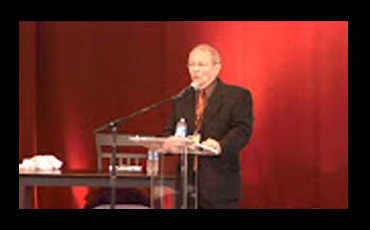
Jeffrey Hopkins speaks about the self-immolations in Tibet (2012-12-27)
A lecture commenting on the self-immolations taking place in Tibet (and now, India) in recent years.
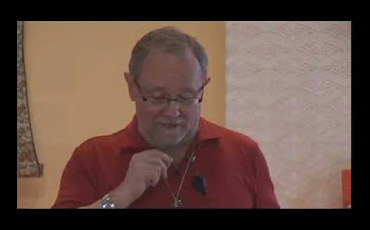
Jeffrey Hopkins - Light of Berotsana Conference of Translators (2008-09-27)
A lecture on the activity of translation in theory and in practice.
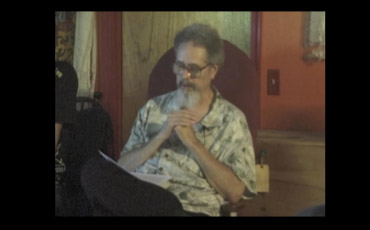
Daniel Perdue on the twenty-one Tibetan thangkas donated to the UMA Institute (2013-09-13)
A talk given by Daniel Perdue on his collection of Tibetan thankas donated to the UMA Institute, given on Sept. 7, 2013.
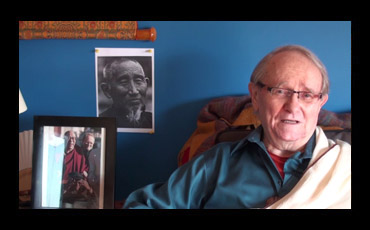
Jeffrey Hopkins talks about his teacher Geshe Wangyal (2018-07)
Jeffrey Hopkins shares how he met, lived, and practiced with his teacher Geshe Ngawang Wangyal (ngag wang dbang rgyal, 1901-1983).
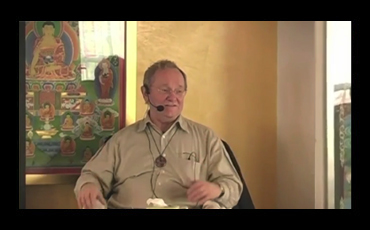
Jeffrey Hopkins on the Twelve Links of Dependent-arising (2009-01-21)
"How We Get Ourselves into the Mess We Are In": The Twelve Links of Dependent-arising. A lecture by Jeffrey Hopkins given at Casa Tibet in Mexico City, Mexico (January 21, 2009), translated into Spanish by Tony Karam (Founder and President, Casa Tibet). A handout for the lecture is available here.
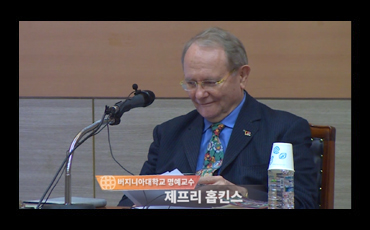
Jeffrey Hopkins on Deity Yoga: The Six Deities (2016-06-04)
A lecture given at the Jingak Order Headquarters in Seoul, South Korea. Korean language interpreters: Ven. Sookyung Jungsa and Dr. Jongbok Yi.
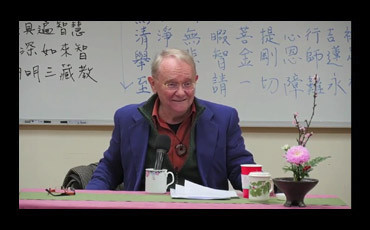
Jeffrey Hopkins and his interactions with His Holiness the Dalai Lama
Jeffrey Hopkins with Chinese interpreter, Patrick Lin. Talk to the National Taiwan University Sunrise Buddhist Club, co-organized by the Torch of Wisdom Institute, and given in Master Yin-kuan Memorial Hall, Torch of Wisdom Institute, Taipei, Taiwan.
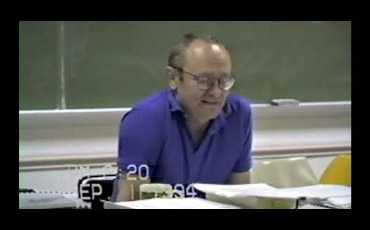
Jeffrey Hopkins: Madhyamaka Seminar, Class # 1 (1994-09-01)
First class of Jeffrey Hopkins's "Madhyamaka Seminar" (Sept. 1, 1994). Following introductory remarks and an overview of the syllabus for the course, this first lecture provides an overview of the course content, foundational texts, their contexts, and the figures whose writings are covered in the course.
Course Reading Materials:
• Jeffrey Hopkins. Meditation on Emptiness. Boston: Wisdom Publications (1983; 1997).
• Jeffrey Hopkins. Emptiness Yoga. Ithaca: Snow Lion Publications (1987).
• Elizabeth Napper. Dependent-arising and Emptiness. Boston: Wisdom Publications (1983; 1997).
• Anne Klein. Path to the Middle: Oral Madhyamaka Philosophy in Tibet. Albany: SUNY Pr. (1994).
• Jeffrey Hopkins. Tsong-kha-pa's Final Exposition of Wisdom. Ithaca: Snow Lion Publications (2008).
• Jeffrey Hopkins. A Guide to Tsong-kha-pa’s “Middle-length Exposition of Special Insight”. UMA Institute (2019), PDF.
• William Magee. The Nature of Things: Emptiness and Essence in the Geluk World. Ithaca: Snow Lion Publications (1999).
• Donald S. Lopez. The Heart Sutra Explained. Albany: SUNY (1988).
• Jeffrey Hopkins. Analysis of Going and Coming. Dharamsala: LTWA (1974).
• Guy Newland. The Two Truths. Ithaca: Snow Lion Publications (1992).
• Daniel Cozort. Unique Tenets of the Middle Way Consequence School. Ithaca: Snow Lion Publications (1998).
• Richard Robinson. "Did Nāgārjuna Really Refute All Philosophical Views?" Philosophy East and West 22(3) [1972]: 325-331.
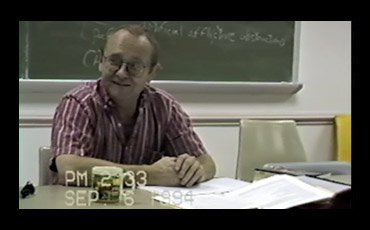
Jeffrey Hopkins: Madhyamaka Seminar, Class # 2 (1994-09-06)
Class #2 of Jeffrey Hopkins's "Madhyamaka Seminar" (Sept. 6, 1994). The lecture begins with a discussion of Tsong-kha-pa's commentary on the sixth chapter of Candrakīrti's "Supplement to the Middle Way" (madhyamaka-avatāra; dbu ma la 'jug pa). This includes a discussion of the ten grounds (bhūmi; sa) as well as the significance of the sixth Bodhisattva "ground", the idea of a wisdom consciousness realizing emptiness in meditative equipoise (samāhita; mnyam bzhag), the role of reasoning in Indian commentaries vs. in Buddhist sūtras, and the life and prophecies of Nāgārjuna.
Recommended prior reading:
Anne Klein. Path to the Middle: Oral Madhyamaka Philosophy in Tibet. Albany: SUNY Pr. (1994), pp. 149-162.
Jeffrey Hopkins. Meditation on Emptiness. Boston: Wisdom Publications (1983; 1997), pp. 564-594.
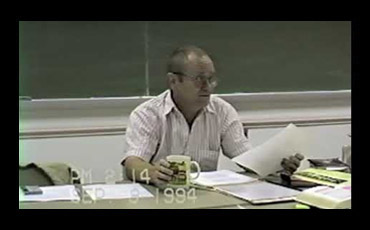
Jeffrey Hopkins: Madhyamaka Seminar, Class # 3 (1994-09-08)
Class #3 of Jeffrey Hopkins's "Madhyamaka Seminar" (Sept. 8, 1994). The lecture continues the discussion of the sixth chapter of Candrakīrti's "Supplement to the Middle Way" (madhyamaka-avatāra; dbu ma la 'jug pa) with Tsong-ka-pa's commentary. Topics discussed include suitable vessels for the teachings, the importance of ethics in enabling the study of emptiness, and merit and motivation in the study and teaching of emptiness.
Recommended prior reading:
Anne Klein. Path to the Middle: Oral Madhyamaka Philosophy in Tibet. Albany: SUNY Pr. (1994), pp. 155-162.
Donald S. Lopez. The Heart Sutra Explained. Albany: SUNY (1988), pp. 19-20.
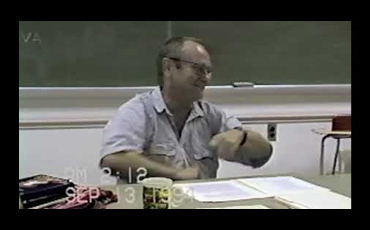
Jeffrey Hopkins: Madhyamaka Seminar, Class # 4 (1994-09-13)
Class #4 of Jeffrey Hopkins's "Madhyamaka Seminar" (Sept. 13, 1994). Following preliminary questions and answers on readings in Meditation on Emptiness, the lecture begins the discussion of the second chapter of Nāgārjuna's "Fundamental Treatise on the Middle Way" (mūla-madhyamaka-karikā; dbu ma rtsa ba'i tshig le'ur byed pa) with Candrakīrti's "Clear Words" (prasannapadā; tshig gsal ba) commentary.
Recommended prior reading:
Jeffrey Hopkins. Meditation on Emptiness. Boston: Wisdom Publications (1983; 1997), pp. 563-594.
Jeffrey Hopkins. Analysis of Going and Coming. Dharamsala: LTWA (1974).
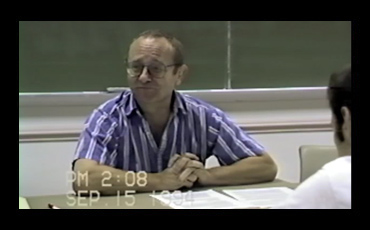
Jeffrey Hopkins: Madhyamaka Seminar, Class # 5 (1994-09-15)
Class #5 of Jeffrey Hopkins's "Madhyamaka Seminar" (Sept. 15, 1994). The lecture continues the discussion of the second chapter of Nāgārjuna's "Fundamental Treatise on the Middle Way" (mūla-madhyamaka-karikā; dbu ma rtsa ba'i tshig le'ur byed pa) with Candrakīrti's "Clear Words" (prasannapadā; tshig gsal ba) commentary. Ancillary topics covered include: the Prāsaṅgika perspective on the difference between reasonings on emptiness between the Mahāyāna and Hinayāna schools, the difficulties of translating Nāgārjuna's root text, why Nāgārjuna might be considered nihilistic by analogy to Parmenides and Zeno.
Recommended prior reading:
Jeffrey Hopkins. Analysis of Going and Coming. Dharamsala: LTWA (1974).
Jeffrey Hopkins. Ocean of Reasoning. Dharamsala: LTWA (1974).

Jeffrey Hopkins: Madhyamaka Seminar, Class # 6 (1994-09-20)
Class #6 of Jeffrey Hopkins's "Madhyamaka Seminar" (Sept. 20, 1994). The lecture continues the discussion of the second chapter of Nāgārjuna's "Fundamental Treatise on the Middle Way" (mūla-madhyamaka-karikā; dbu ma rtsa ba'i tshig le'ur byed pa) with Candrakīrti's "Clear Words" (prasannapadā; tshig gsal ba) commentary. Ancillary topics covered include: the manner in which the ultimate analysis leads to an understanding of the illusion-like nature of conventional phenomena, the necessity and compatibility of virtue with wisdom, the way of conceiving of goer and going in relation to the idea of inherent existence, being "one entity" in contrast to being "one", etc.
Recommended prior reading:
Jeffrey Hopkins. Analysis of Going and Coming. Dharamsala: LTWA (1974).
Jeffrey Hopkins. Ocean of Reasoning. Dharamsala: LTWA (1974).

Jeffrey Hopkins: Madhyamaka Seminar, Class # 7 (1994-09-22)
Class #7 of Jeffrey Hopkins's "Madhyamaka Seminar" (Sept. 22, 1994). The lecture covers Trijang Lo-sang-ye-she-tan-dzin-gya-tsho's topical outline to Tsong-kha-pa's "Middle-length Exposition of Special Insight" as a way of entering into the discussion of the topic. The lecture begins with a discussion of how to delineate the view of emptiness, beginning with identifying afflictive ignorance.
Recommended prior reading:
Jeffrey Hopkins. Tsong-kha-pa's Final Exposition of Wisdom. Ithaca: Snow Lion Publications (2008), pp. 37-58.
Jeffrey Hopkins. A Guide to Tsong-kha-pa’s “Middle-length Exposition of Special Insight”: An Abbreviated version of Tri-jang Lo-sang-ye-she-tan-dzin-gya-tsho’s Topical Outline (sa bcad). UMA Institute (2019), PDF.
Jeffrey Hopkins. Emptiness Yoga. Ithaca: Snow Lion Publications (1987), pp. 55-67.
Jeffrey Hopkins. Meditation on Emptiness. Boston: Wisdom Publications (1983; 1997), pp. 35-42, 684-685.
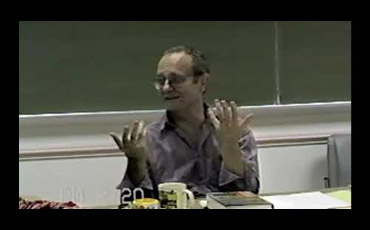
Jeffrey Hopkins: Madhyamaka Seminar, Class # 8 (1994-09-27)
Class #8 of Jeffrey Hopkins's "Madhyamaka Seminar" (Sept. 27, 1994). The lecture continues the discussion of the sixth chapter of Candrakīrti's "Supplement to the Middle Way" (madhyamaka-avatāra; dbu ma la 'jug pa) with Tsong-ka-pa's commentary -- the "Illumination of the Thought" (dgongs pa rab gsal). Topics discussed include: the conception of true existence in the Prāsaṅgika-mādhyamika school, the sequence of composition of Tsong-kha-pa's works on the view in Prāsaṅgika, imputation by conceptuality, objects existing conventionally without investigation or analysis vs. objects being posited upon having engaged in analysis, and understanding the example of imputing "snake" to a rope.
Recommended prior reading:
Anne Klein. Path to the Middle: Oral Madhyamaka Philosophy in Tibet. Albany: SUNY Pr. (1994), pp. 175-183.

Jeffrey Hopkins: Madhyamaka Seminar, Class # 9 (1994-09-29)
Class #9 of Jeffrey Hopkins's "Madhyamaka Seminar" (Sept. 29, 1994). The lecture finishes the discussion of the sixth chapter of Candrakīrti's "Supplement to the Middle Way" (madhyamaka-avatāra; dbu ma la 'jug pa) with Tsong-kha-pa's commentary -- the "Illumination of the Thought" (dgongs pa rab gsal) -- and then proceeds to discuss the uncommon features of Madhyamaka as presented in Tsong-kha-pa's "Great Exposition of the Stages of the Path" (lam rim chen mo). Topics include: the view of the transitory as limited to a self of persons, the scope of 'I' and 'mine' in relation to analysis into selflessness, three types of conceptual consciousnesses, the uncommon feature of Madhyamaka and Tsong-kha-pa's critique of previous Tibetan Madhyamaka scholars, the distinction between existence and inherent existence, Prāsaṅgikas "not having a system," the law of the excluded middle in Madhyamaka, etc.
Recommended prior reading:
Anne Klein. Path to the Middle: Oral Madhyamaka Philosophy in Tibet. Albany: SUNY Pr. (1994), pp. 175-183.
Elizabeth Napper. Dependent-arising and Emptiness. Boston: Wisdom Publications (1989), pp. 168-215, 284-400.

Jeffrey Hopkins: Madhyamaka Seminar, Class # 10 (1994-10-04)
Class #10 of Jeffrey Hopkins's "Madhyamaka Seminar" (Oct. 4, 1994). The lecture consists of an introduction to topics in Middle Way (Madhyamaka) Philosophy. Topics include: the sense in which conventional truths are produced by ignorance; hermeneutical issues with Nāgārjuna, Candrakīrti, and later Gelukpa scholars; the gradations of teachings with regard to emptiness; review of the four schools of tenets; selflessness vs. subtle selflessness in Prāsaṅgika, etc.
Recommended prior reading:
Anne Klein. Path to the Middle: Oral Madhyamaka Philosophy in Tibet. Albany: SUNY Pr. (1994), pp. 131-145.
Jeffrey Hopkins. Emptiness Yoga. Ithaca: Snow Lion Publications (1987), pp. 36-122, 360-372.
Jeffrey Hopkins. Meditation on Emptiness. Boston: Wisdom Publications (1983; 1997), pp. 43-46, 625-636.
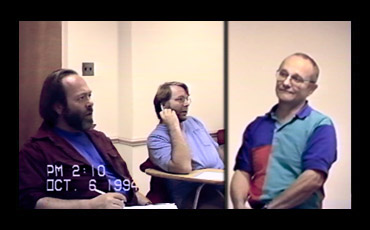
Jeffrey Hopkins: Madhyamaka Seminar, Class # 11 (1994-10-06)
Class #11 of Jeffrey Hopkins's "Madhyamaka Seminar" (Oct. 6, 1994). The lecture continues the discussion of what is imputed in selflessness. Topics include: the refutation of "true establishment" (bden par grub pa) and its meaning in Prāsaṅgika and Svātantrika, non-defective awareness and the four superficial causes of error, the two truths, and the meaning of "conventional" (saṃvṛtti).
Recommended prior reading:
Anne Klein. Path to the Middle: Oral Madhyamaka Philosophy in Tibet. Albany: SUNY Pr. (1994), pp. 23-38.
Jeffrey Hopkins. Emptiness Yoga. Ithaca: Snow Lion Publications (1987), pp. 123-155, 373-382.
Jeffrey Hopkins. Meditation on Emptiness. Boston: Wisdom Publications (1983; 1997), pp. 636-638.
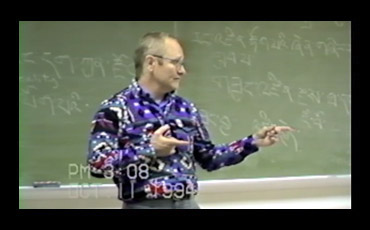
Jeffrey Hopkins: Madhyamaka Seminar, Class # 12 (1994-10-11)
Class #12 of Jeffrey Hopkins's "Madhyamaka Seminar" (Oct. 11, 1994). The lecture covers the distinctiveness of Candrakīrti, the identification of true existence in the Svātantrika school and its contrast with the object(s) of negation in Cittamātra, and unique Prāsaṅgika perspectives on the object of negation.
Recommended prior reading:
Anne Klein. Path to the Middle: Oral Madhyamaka Philosophy in Tibet. Albany: SUNY Pr. (1994), pp. 167-174.
Jeffrey Hopkins. Emptiness Yoga. Ithaca: Snow Lion Publications (1987), pp. 209-262, 391-408.
Jeffrey Hopkins. Meditation on Emptiness. Boston: Wisdom Publications (1983; 1997), pp. 46-51, 175-196, 677-697.
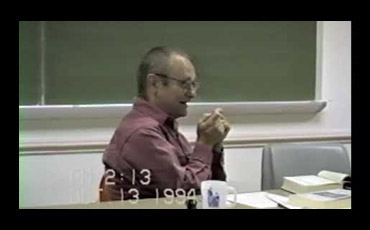
Jeffrey Hopkins: Madhyamaka Seminar, Class # 13 (1994-10-13)
Class #13 of Jeffrey Hopkins's "Madhyamaka Seminar" (Oct. 13, 1994). The lecture centers around student questions on the readings. Topics covered include: the four modes of existence (ultimate, true, natural, and inherent) in the different tenet systems, the difference between "having a proper basis of designation" and "being established from the side of a basis of designation," the relationship between selflessness of persons and selflessness of phenomena, appearance of inherent existence to the sense consciousnesses, the emptiness of emptiness, etc.
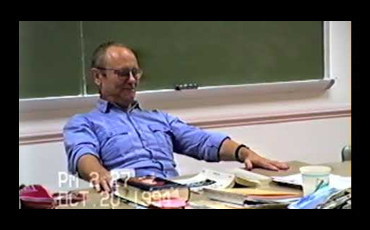
Jeffrey Hopkins: Madhyamaka Seminar, Class # 14 (1994-10-20)
Class #14 of Jeffrey Hopkins's "Madhyamaka Seminar" (Oct. 20, 1994). The lecture discusses the textual source for the object of negation in Svāntantrika, the distinction between the two truths in terms of ontology and epistemology, the basis of division into the two truths, thoughts on the impact of translation equivalent selection, etc.
Recommended prior reading:
Jeffrey Hopkins. Emptiness Yoga. Ithaca: Snow Lion Publications (1987), pp. 263-281.
Guy Newland. The Two Truths. Ithaca: Snow Lion Publ. (1992), 1-50.
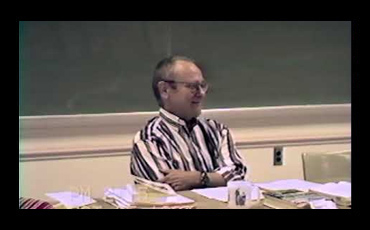
Jeffrey Hopkins: Madhyamaka Seminar, Class # 15 (1994-10-25)
Class #15 of Jeffrey Hopkins's "Madhyamaka Seminar" (Oct. 25, 1994). The lecture discusses production and the four possibilities (from self, other, both, and neither), relationship between cause and effect, production according to Prasāṅgika, and worldly notions of production from other.
Recommended prior reading:
Guy Newland. The Two Truths. Ithaca: Snow Lion Publ. (1992), 51-94.
Jeffrey Hopkins. Emptiness Yoga. Ithaca: Snow Lion Publications (1987), pp. 156-203, 383-390.
Jeffrey Hopkins. Meditation on Emptiness. Boston: Wisdom Publications (1983; 1997), pp. 57-60, 131-150, 639-650.
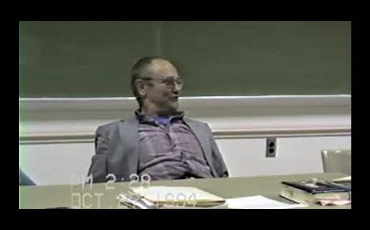
Jeffrey Hopkins: Madhyamaka Seminar, Class # 16 (1994-10-27)
Class #16 of Jeffrey Hopkins's "Madhyamaka Seminar" (Oct. 27, 1994). The lecture discusses the analyses of the four types of production; assumptions of inherent existence in desire, hatred, and ignorance; different styles of talking about emptiness; Sāṃkhya notions of self-production, and popular conceptions of self-production.
Recommended prior reading:
Jeffrey Hopkins. Meditation on Emptiness. Boston: Wisdom Publications (1983; 1997), pp. 9-17.
Elizabeth Napper. Dependent-arising and Emptiness. Boston: Wisdom Publications (1989), pp. 67-122.
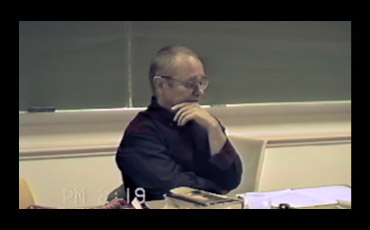
Jeffrey Hopkins: Madhyamaka Seminar, Class #17 (1994-11-01)
Class #17 of Jeffrey Hopkins's "Madhyamaka Seminar" (Nov. 1, 1994). The lecture begins with a brief introduction to Tsong-kha-pa's presentation of the sixteen problems solved by not asserting inherent existence, and the eighteen distinctive features of the Prasāṅgika system in the Geluk presentation, such as the denial of the existence of self-cognition (svasaṃvedana; rang rig), etc. The lecture then resumes the analyses of the four types of production, proceeding to a discussion of "real" and "unreal" with regard to a worldly consciousness.
Recommended prior reading:
Guy Newland. The Two Truths. Ithaca: Snow Lion Publ. (1992), 95-157.
Elizabeth Napper. Dependent-arising and Emptiness. Boston: Wisdom Publications (1989), pp. 123-150.
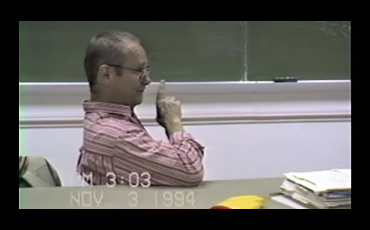
Jeffrey Hopkins: Madhyamaka Seminar, Class #18 (1994-11-03)
Class #18 of Jeffrey Hopkins's "Madhyamaka Seminar" (Nov. 3, 1994). The lecture begins with a brief presentation of the critique by Richard Robinson of Nāgārjuna and his characterization of the Madhyamaka reasonings as "a shell game," followed by a discussion of the manner in which the Madhyamaka reasonings function according to Gelukpa scholars. This is followed by a discussion of the different ways of defining inherent existence and avoiding a definition of the object of negation that is too narrow. The lecture concludes with reminiscences about Richard Robinson.
Recommended prior reading:
Richard Robinson. "Did Nāgārjuna Really Refute All Philosophical Views?" Philosophy East and West 22(3) [1972]: 325-331.
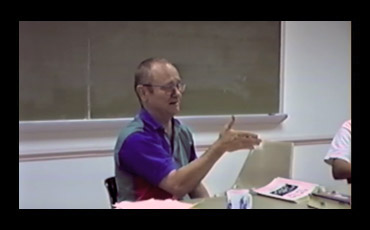
Jeffrey Hopkins: Madhyamaka Seminar, Class #19 (1994-11-08)
Class #19 of Jeffrey Hopkins's "Madhyamaka Seminar" (Nov. 14, 1994). The lecture addresses questions related to Guy Newland's _The Two Truths_ such as the relationship between emptiness, true cessations, ultimate truths, and nirvāṇa in the opinions of 'Jam-dbyangs-bzhad-pa (1648-1721/1722) and Paṇ-chen Bsod-nams-grags-pa (1478-1554); objects of comprehension (gzhal bya) vs. objects that are found (rnyed don) by a conventional valid cognition; and, the epistemological vs. ontological approaches to emptiness.
Recommended prior reading:
Guy Newland. The Two Truths Ithaca: Snow Lion Publ. (1992), 158-216.
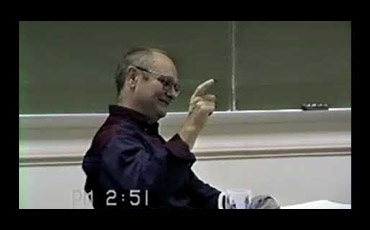
Jeffrey Hopkins: Madhyamaka Seminar, Class #20 (1994-11-10)
Class #20 of Jeffrey Hopkins's "Madhyamaka Seminar" (Nov. 10, 1994). The lecture begins with a discussion of the emptiness of emptiness, and proceeds on to omniscience and the perceptions of a Buddha, and how that relates to tantric visualizations during Generation Stage practices. The lecture then begins summarizing the unique assertions of the Middle Way Consequence School according to 'Jam-dbyangs-bzhad-pa (1648-1721/1722), including the existence of external objects and a mind-basis-of-all (alayavijñāna), and the two selflessnesses.
Recommended prior reading:
Daniel Cozort. Unique Tenets of the Middle Way Consequence School Ithaca: Snow Lion Publ. (1998), pp. 31-72, 285-424 [Cozort 1989 dissert., pp. 2-43, 276-431]
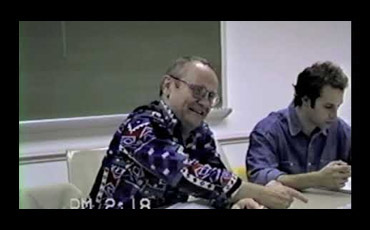
Jeffrey Hopkins: Madhyamaka Seminar, Class #21 (1994-11-15)
The lecture begins with a discussion of T.R.V. Murti's ideas about the two truths, proceeds to discuss the difference between analysis that is involved in constructing a philosophical system with analysis in a meditative context, and then continues the discussion of the unique assertions of the Middle Way Consequence School according to 'Jam-dbyangs-bzhad-pa (1648-1721/1722). After reviewing the topic of the ālaya-vijñāna in the context of unique tenets of Prāsaṅgika-madhyamaka, the discussion moves on to conventional valid cognition (and the etymology of pramāṇa), conceptual mental direct perception, yogic direct perception by ordinary persons, subtlty of the object of negation, the three times being implicitly established as functioning things, disintegrateness being a functioning thing, etc.
Recommended prior reading:
Daniel Cozort. Unique Tenets of the Middle Way Consequence School Ithaca: Snow Lion Publ. (1998), pp. 31-72, 285-424 [Cozort 1989 dissert., pp. 2-43, 276-431]
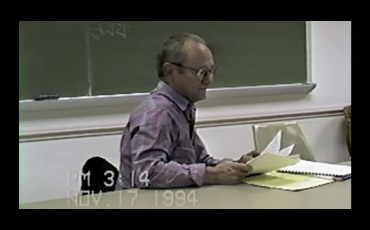
Jeffrey Hopkins: Madhyamaka Seminar, Class #22 (1994-11-17)
The lecture begins with a discussion of B.K. Matilal's ideas about Madhyamaka and what it means to "have tenets" in Madhyamaka, and then continues the discussion of the unique assertions of the Middle Way Consequence School according to 'Jam-dbyangs-bzhad-pa (1648-1721/1722), covering the non-assertion of autonomous syllogisms (svātantra; rang rgyud) and self-consciousness (svasaṃvedana; rang rig), and that perception (pratyakṣa; mngon gyur) refers to objects not subjects (mngon sum), and true cessations (nirodha-satya; 'gog bden).
Recommended prior reading:
Daniel Cozort. Unique Tenets of the Middle Way Consequence School Ithaca: Snow Lion Publ. (1998), pp. 31-72, 285-424 [Cozort 1989 dissert., pp. 2-43, 276-431]
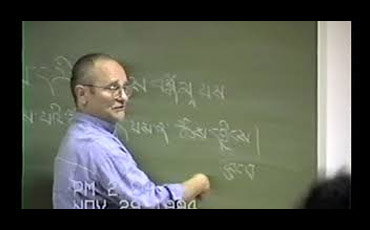
Jeffrey Hopkins: Madhyamaka Seminar, Class #23 (1994-11-29)
The lecture reviews the significance of the unique perspective of Candrakīrti as highlighted by Tsong-kha-pa, and then continues the discussion of the unique assertions of the Middle Way Consequence School according to 'Jam-dbyangs-bzhad-pa (1648-1721/1722), covering nirvāṇa with and without remainder, and predispositions and non-afflictive ignorance being obstructions to omniscience (and incidentally, the afflictive obstructions and obstructions to omniscience in Cittamātra and Svātantrika).
Recommended prior reading:
Daniel Cozort. Unique Tenets of the Middle Way Consequence School Ithaca: Snow Lion Publ. (1998), pp. 31-72, 285-424 [Cozort 1989 dissert., pp. 2-43, 276-431]
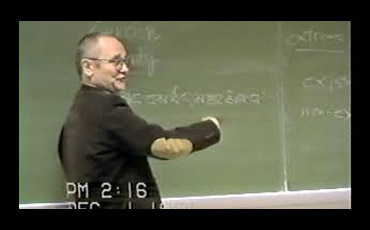
Jeffrey Hopkins: Madhyamaka Seminar, Class #24 (1994-12-01)
The lecture concludes the discussion of the unique assertions of the Middle Way Consequence School according to 'Jam-dbyangs-bzhad-pa (1648-1721/1722), with the unique assertions concerning the extremes of existence and non-existence. The discussion then moves to the assertions of Buddhapalita and Bhāviveka regarding affirming and non-affirming negations with regard to Nāgārjuna's Fundamental Treatise, the reversing of consequences (thal zlog), and the common appearance of subjects (chos can mthun snang ba).
Recommended prior reading:
Daniel Cozort. Unique Tenets of the Middle Way Consequence School Ithaca: Snow Lion Publ. (1998), pp. 31-72, 285-424 [Cozort 1989 dissert., pp. 2-43, 276-431]
Jeffrey Hopkins. Meditation on Emptiness Boston: Wisdom Publ. (1983; 1997), pp. 431-530
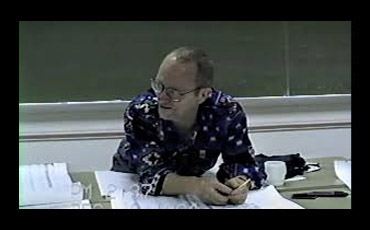
Jeffrey Hopkins: Madhyamaka Seminar, Class #25 (1994-12-06)
The lecture concludes the course by discussing the ontology of the Madhyamaka school in terms of the organization of phenomena, beginning with "the selfless" (bdag med, nairātmya).
Recommended prior reading:
Jeffrey Hopkins. Meditation on Emptiness Boston: Wisdom Publ. (1983; 1997), pp. 213-271
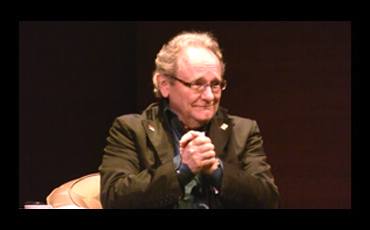
Jeffrey Hopkins - A Buddhist Perspective on Homosexuality (2010-06-02)
A lecture given at the Rubin Museum in New York City, on the discussion of homosexuality in classical Buddhist sources.
Reference documents:
Lecture Notes. Download PDF
Accompanying Charts. Download PDF
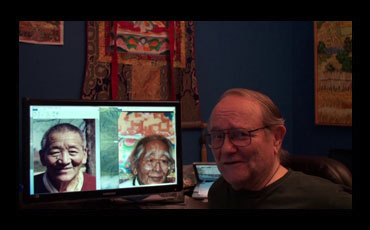
Analysis of Going and Coming: Is Going Possible?, Class # 1 (2018-06-19)
The first class of the new series about Nagarjuna’s analysis of going and coming starts by questioning the path. If one is going, then that action of going must be ascribed to a certain path. Is this path then the path gone over, the path yet to be gone over, or the path being gone over?
Course Reading Materials:
• Jeffrey Hopkins. Analysis of Going and Coming: the Second Chapter of Candrakirti's Clear Words. Dharamsala: Library of Tibetan Works and Archives (1976).
• Jeffrey Hopkins. Chapter Two of Ocean of Reasoning by Tsong-ka-pa. Dharamsala: Library of Tibetan Works and Archives (1977).
• Jeffrey Hopkins. Chandrakīrti’s and Tsong-kha-pa’s Commentaries on Nāgārjuna’s “Treatise on the Middle,” Chapter Two: Is Going Possible? UMA Institute for Tibetan Studies (in preparation).
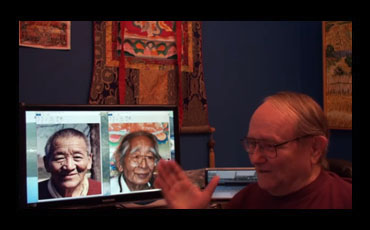
Analysis of Going and Coming: Is Going Possible?, Class # 2 (2018-06-26)
The class begins with the analysis of the third verse of Nagarjuna’s text. Although the verse could appear as a mere grammatical word-play at a first glance, if understood correctly, it carries a profound meaning which can deeply challenge the way we experience objects in our day to day life. If objects would exist as concretely as they appear, then in the analysis of going in the statement "the being-gone-over is being gone over", one going would be used up for the "being-gone-over", since there is no second action of going, the expression "is being gone over" would be without a going, thus making it meaningless.
Recommended prior reading:
• Jeffrey Hopkins. Analysis of Going and Coming: the Second Chapter of Candrakirti's Clear Words. Dharamsala: Library of Tibetan Works and Archives (1976).
• Jeffrey Hopkins. Chapter Two of Ocean of Reasoning by Tsong-ka-pa. Dharamsala: Library of Tibetan Works and Archives (1977).
• Jeffrey Hopkins. Chandrakīrti’s and Tsong-kha-pa’s Commentaries on Nāgārjuna’s “Treatise on the Middle,” Chapter Two: Is Going Possible? UMA Institute for Tibetan Studies (in preparation).
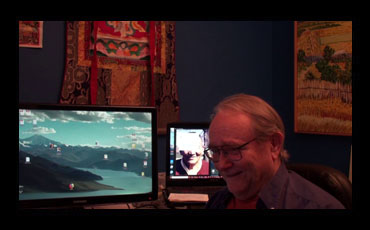
Analysis of Going and Coming: Is Going Possible?, Class # 3 (2018-07-10)
Class continues with the debate about going - in the statement "the being-gone-over is being gone over" - could there be two goings? Where would be the fault in asserting such? The class then continues with even more thought-provoking questions: Is a goer going or is a non-goer going? When does a goer become a goer? Does a non-goer become a goer? Although these questions can initially seem as just a kind of game, they actually touch the core of how objects normally appear to us.
Recommended prior reading:
• Jeffrey Hopkins. Analysis of Going and Coming: the Second Chapter of Candrakirti's Clear Words. Dharamsala: Library of Tibetan Works and Archives (1976).
• Jeffrey Hopkins. Chapter Two of Ocean of Reasoning by Tsong-ka-pa. Dharamsala: Library of Tibetan Works and Archives (1977).
• Jeffrey Hopkins. Chandrakīrti’s and Tsong-kha-pa’s Commentaries on Nāgārjuna’s “Treatise on the Middle,” Chapter Two: Is Going Possible? UMA Institute for Tibetan Studies (in preparation).
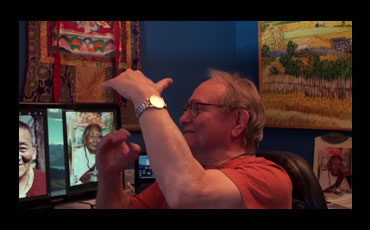
Analysis of Going and Coming: Is Going Possible?, Class # 4 (2018-07-17)
The debate continues with the objectors' insisting that just a goer is going. Nāgārjuna gives further proofs why this is untenable, saying that one going is needed to designate a "goer" and another going is needed to designate the "is going". Of course, since two goings would imply two goers, an inherently existent going is thus refuted. The objector then tries to prove that going exists because its beginning exists. Nāgārjuna shows that this is not so, because the beginning of going does not exist. Why not? Because going does not begin on the gone-over, not on the not-yet-gone-over, and not on the being-gone-over.
Recommended prior reading:
• Jeffrey Hopkins. Analysis of Going and Coming: the Second Chapter of Candrakirti's Clear Words. Dharamsala: Library of Tibetan Works and Archives (1976).
• Jeffrey Hopkins. Chapter Two of Ocean of Reasoning by Tsong-ka-pa. Dharamsala: Library of Tibetan Works and Archives (1977).
• Jeffrey Hopkins. Chandrakīrti’s and Tsong-kha-pa’s Commentaries on Nāgārjuna’s “Treatise on the Middle,” Chapter Two: Is Going Possible? UMA Institute for Tibetan Studies (in preparation).
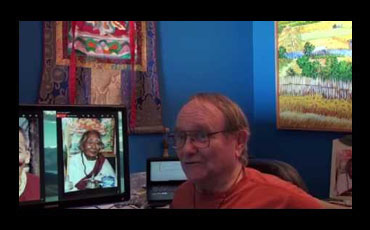
Analysis of Going and Coming: Is Going Possible?, Class # 5 (2018-07-31)
The class discusses the object of negation, which is often mistakenly taken to be an object itself instead of inherent existence of an object. Following the explanation in Tsong-kha-pa’s Final Exposition of Wisdom, the class then shows what is the difference between seeing everything as like an illusion, and seeing everything as an illusion. Correctly seeing the phenomena as like an illusion will protect oneself from being drawn into accepting phenomena as they appear, and in this way positively affect all of one’s activities. At the conclusion, professor Hopkins explains what an ultimate analysis means in Gelug, and how surprisingly simple these reasonings are.
Recommended prior reading:
• Jeffrey Hopkins. Analysis of Going and Coming: the Second Chapter of Candrakirti's Clear Words. Dharamsala: Library of Tibetan Works and Archives (1976).
• Jeffrey Hopkins. Chapter Two of Ocean of Reasoning by Tsong-ka-pa. Dharamsala: Library of Tibetan Works and Archives (1977).
• Jeffrey Hopkins. Chandrakīrti’s and Tsong-kha-pa’s Commentaries on Nāgārjuna’s “Treatise on the Middle,” Chapter Two: Is Going Possible? UMA Institute for Tibetan Studies (in preparation).
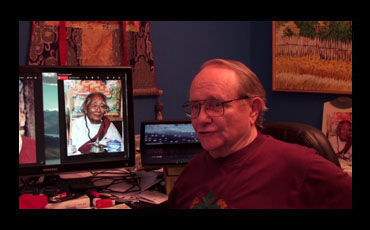
Analysis of Going and Coming: Is Going Possible?, Class # 6 (2018-08-14)
In order to go deeper into the reasonings presented by Nāgārjuna in his Fundamental Treatise on the Middle Called Wisdom, the class starts with the study of Tsong-kha-pa’s commentary, called Ocean of Reasoning. After the introduction, the general structure of the chapters and reasonings is presented. The class then begins with the first reasoning: a refutation through analyzing the object (path).
Recommended prior reading:
• Jeffrey Hopkins. Analysis of Going and Coming: the Second Chapter of Candrakirti's Clear Words. Dharamsala: Library of Tibetan Works and Archives (1976).
• Jeffrey Hopkins. Chapter Two of Ocean of Reasoning by Tsong-ka-pa. Dharamsala: Library of Tibetan Works and Archives (1977).
• Jeffrey Hopkins. Chandrakīrti’s and Tsong-kha-pa’s Commentaries on Nāgārjuna’s “Treatise on the Middle,” Chapter Two: Is Going Possible? UMA Institute for Tibetan Studies (in preparation).
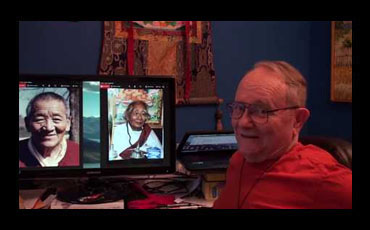
Analysis of Going and Coming: Is Going Possible?, Class # 7 (2018-08-21)
The class begins with the discussions about different translations for the bden pa ba, and the implications that these different translations could imply. Continuing with Tsong-kha-pa's commentary, an important distinction is brought up and examined: what is the difference between saying that something is imputed upon an aggregation of minute particles, and saying that something is imputed in dependence upon an aggregation of minute particles?
Recommended prior reading:
• Jeffrey Hopkins. Analysis of Going and Coming: the Second Chapter of Candrakirti's Clear Words. Dharamsala: Library of Tibetan Works and Archives (1976).
• Jeffrey Hopkins. Chapter Two of Ocean of Reasoning by Tsong-ka-pa. Dharamsala: Library of Tibetan Works and Archives (1977).
• Jeffrey Hopkins. Chandrakīrti’s and Tsong-kha-pa’s Commentaries on Nāgārjuna’s “Treatise on the Middle,” Chapter Two: Is Going Possible? UMA Institute for Tibetan Studies (in preparation).
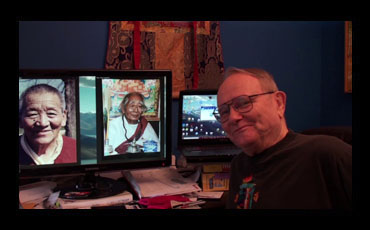
Analysis of Going and Coming: Is Going Possible?, Class # 8 (2018-08-28)
The class analyses objectors' criticism of Chandrakirti’s refutation of the third category. Objector disagrees with Chandrakirti’s refutation, because in his view it would eliminate the third category completely. However, Tsong-kha-pa responds to the objector that only an inherently existent being-gone-over is being negated, conventionally existent being-gone-over is not.
Recommended prior reading:
• Jeffrey Hopkins. Analysis of Going and Coming: the Second Chapter of Candrakirti's Clear Words. Dharamsala: Library of Tibetan Works and Archives (1976).
• Jeffrey Hopkins. Chapter Two of Ocean of Reasoning by Tsong-ka-pa. Dharamsala: Library of Tibetan Works and Archives (1977).
• Jeffrey Hopkins. Chandrakīrti’s and Tsong-kha-pa’s Commentaries on Nāgārjuna’s “Treatise on the Middle,” Chapter Two: Is Going Possible? UMA Institute for Tibetan Studies (in preparation).
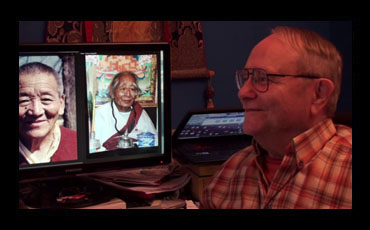
Analysis of Going and Coming: Is Going Possible?, Class # 9 (2018-09-11)
The class discusses the difference between a foot and a foot that it is established by way of its own character. Although Tsong-kha-pa puts great emphasis on the importance of making out the distinction between the two, it is very difficult to observe this difference in our own experience because when a foot appears, its being established by way of its own character appears along with it. Thus the first step is to understand well the distinction on a verbal level. The class then discusses also other difficulties which arise when trying to develop an understanding and meditate on emptiness.
Recommended prior reading:
• Jeffrey Hopkins. Analysis of Going and Coming: the Second Chapter of Candrakirti's Clear Words. Dharamsala: Library of Tibetan Works and Archives (1976).
• Jeffrey Hopkins. Chapter Two of Ocean of Reasoning by Tsong-ka-pa. Dharamsala: Library of Tibetan Works and Archives (1977).
• Jeffrey Hopkins. Chandrakīrti’s and Tsong-kha-pa’s Commentaries on Nāgārjuna’s “Treatise on the Middle,” Chapter Two: Is Going Possible? UMA Institute for Tibetan Studies (in preparation).
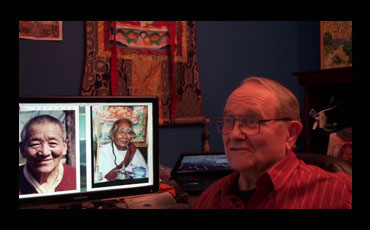
Analysis of Going and Coming: Is Going Possible?, Class # 10 (2018-12-11)
The class addresses a possible misconception that Nagarjuna is eliminating the being gone over completely. However, as is clear from Tsong-kha-pa's commentary, the being gone over does exist. Otherwise if being gone over could not be posited, then there would be no action of going left, and the whole fundamental teaching of dependent arising would be undermined. The class then continues with Tsong-kha-pa’s explanation of Nagarjuna’s first verse: Respectively, the gone-over is not being gone over, / The not-yet-gone-over is also not being gone over, / A being-gone-over without including the gone-over / And the not-yet-gone-over is not known.
Recommended prior reading:
• Jeffrey Hopkins. Analysis of Going and Coming: the Second Chapter of Candrakirti's Clear Words. Dharamsala: Library of Tibetan Works and Archives (1976).
• Jeffrey Hopkins. Chapter Two of Ocean of Reasoning by Tsong-ka-pa. Dharamsala: Library of Tibetan Works and Archives (1977).
• Jeffrey Hopkins. Chandrakīrti’s and Tsong-kha-pa’s Commentaries on Nāgārjuna’s “Treatise on the Middle,” Chapter Two: Is Going Possible? UMA Institute for Tibetan Studies (in preparation).
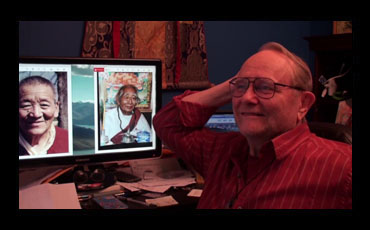
Analysis of Going and Coming: Is Going Possible?, Class # 11 (2018-12-18)
The class reviews the explanation of Nagarjuna’s first verse which says that none of the three paths are being gone over. The class then clarifies some often misunderstood key points regarding the process of imputation. For example, an important distinction is made between stating that a foot is an aggregation of minute particles, or saying that it is imputed in dependence upon the aggregation of minute particles. Another common misunderstanding is that object imputed is just a word or a label, and not an actual object.
Recommended prior reading:
• Jeffrey Hopkins. Analysis of Going and Coming: the Second Chapter of Candrakirti's Clear Words. Dharamsala: Library of Tibetan Works and Archives (1976).
• Jeffrey Hopkins. Chapter Two of Ocean of Reasoning by Tsong-ka-pa. Dharamsala: Library of Tibetan Works and Archives (1977).
• Jeffrey Hopkins. Chandrakīrti’s and Tsong-kha-pa’s Commentaries on Nāgārjuna’s “Treatise on the Middle,” Chapter Two: Is Going Possible? UMA Institute for Tibetan Studies (in preparation).
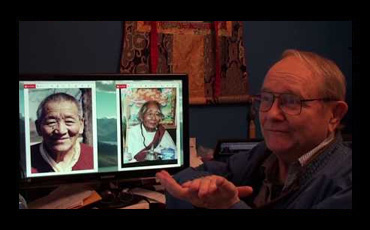
Analysis of Going and Coming: Is Going Possible?, Class # 12 (2019-01-08)
The class analyses Tsong-kha-pa’s response to the objector's claim that (inherently existent) being-gone-over exists, because it is the area stepped on by the foot. Tsong-kha-pa answers that this is not feasible, because foot is posited upon being imputed in dependence upon an aggregation of minute particles. These particles (i.e. parts) can be subsumed into two groups: in the particles of the front half of the foot (which is the not-yet-gone-over of a goer), and in the particles of the back half of the foot (which is the gone-over of a goer). As there are no other parts left, there also can not be an (inherently existent) third area.
Recommended prior reading:
• Jeffrey Hopkins. Analysis of Going and Coming: the Second Chapter of Candrakirti's Clear Words. Dharamsala: Library of Tibetan Works and Archives (1976).
• Jeffrey Hopkins. Chapter Two of Ocean of Reasoning by Tsong-ka-pa. Dharamsala: Library of Tibetan Works and Archives (1977).
• Jeffrey Hopkins. Chandrakīrti’s and Tsong-kha-pa’s Commentaries on Nāgārjuna’s “Treatise on the Middle,” Chapter Two: Is Going Possible? UMA Institute for Tibetan Studies (in preparation).
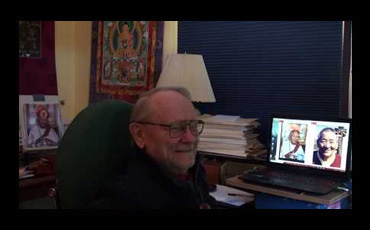
Analysis of Going and Coming: Is Going Possible?, Class # 13 (2019-01-22)
The class continues with Tsong-kha-pa’s explanation about how the foot is imputed in dependence on its parts, and how an inherently existent being-gone-over can’t be found. The text then continues with objector’s response in which he tries to show that such an explanation is not logically feasible. The class also contains interesting discussion with the participants about various possibilities of what the third category in this paragraph could mean. Does it mean the whole foot, the area in the middle of the foot, or maybe even something else?
Recommended prior reading:
• Jeffrey Hopkins. Analysis of Going and Coming: the Second Chapter of Candrakirti's Clear Words. Dharamsala: Library of Tibetan Works and Archives (1976).
• Jeffrey Hopkins. Chapter Two of Ocean of Reasoning by Tsong-ka-pa. Dharamsala: Library of Tibetan Works and Archives (1977).
• Jeffrey Hopkins. Chandrakīrti’s and Tsong-kha-pa’s Commentaries on Nāgārjuna’s “Treatise on the Middle,” Chapter Two: Is Going Possible? UMA Institute for Tibetan Studies (in preparation).
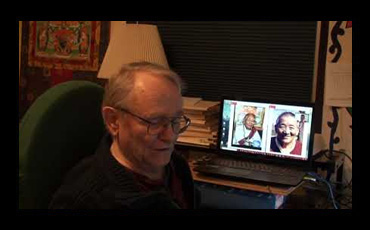
Analysis of Going and Coming: Is Going Possible?, Class # 14 (2019-01-29)
The class expands on the objection in which the objector criticizes Tsong-kha-pa’s explanation about what is the third category. Tsong-kha-pa responds to this criticism that he would indeed be at fault, if he would negate third category completely. However, he negates only inherently existent being-gone-over. Conventionally existent being-gone-over is not negated.
Recommended prior reading:
• Jeffrey Hopkins. Analysis of Going and Coming: the Second Chapter of Candrakirti's Clear Words. Dharamsala: Library of Tibetan Works and Archives (1976).
• Jeffrey Hopkins. Chapter Two of Ocean of Reasoning by Tsong-ka-pa. Dharamsala: Library of Tibetan Works and Archives (1977).
• Jeffrey Hopkins. Chandrakīrti’s and Tsong-kha-pa’s Commentaries on Nāgārjuna’s “Treatise on the Middle,” Chapter Two: Is Going Possible? UMA Institute for Tibetan Studies (in preparation).
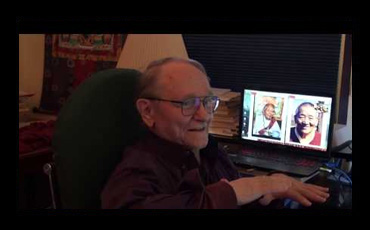
Analysis of Going and Coming: Is Going Possible?, Class # 15 (2019-02-05)
In the class prof. Hopkins unsuccessfully tries to find his foot by patiently and slowly moving through all the likely parts. The emphasis is made that such an analysis has to be done thoroughly, and that one should consider even the possibility that the foot might be somewhere else, for example in another room. After that, one can come to a shocking conclusion that that which is not a foot, is designated as a foot! Note: video is not complete due to technical issues.
Recommended prior reading:
• Jeffrey Hopkins. Analysis of Going and Coming: the Second Chapter of Candrakirti's Clear Words. Dharamsala: Library of Tibetan Works and Archives (1976).
• Jeffrey Hopkins. Chapter Two of Ocean of Reasoning by Tsong-ka-pa. Dharamsala: Library of Tibetan Works and Archives (1977).
• Jeffrey Hopkins. Chandrakīrti’s and Tsong-kha-pa’s Commentaries on Nāgārjuna’s “Treatise on the Middle,” Chapter Two: Is Going Possible? UMA Institute for Tibetan Studies (in preparation).
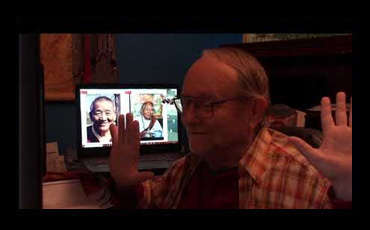
Analysis of Going and Coming: Is Going Possible?, Class # 16 (2019-02-19)
The class addresses common mistake in understanding Tsongkhapa’s explanation of dependent arising as if we already see things in this way. Indeed his explanation is very subtle, even to the point, that some scholars would say that Tsong-kha-pa’s explanation is too subtle for people to understand and put into practice. Then the class continues with the second stanza: Where there is movement, there is going, / And that also is on the being-gone-over of a goer, / Not on the gone-over, nor on the not-yet-gone over; / Therefore going is on the being-gone-over.
Recommended prior reading:
• Jeffrey Hopkins. Analysis of Going and Coming: the Second Chapter of Candrakirti's Clear Words. Dharamsala: Library of Tibetan Works and Archives (1976).
• Jeffrey Hopkins. Chapter Two of Ocean of Reasoning by Tsong-ka-pa. Dharamsala: Library of Tibetan Works and Archives (1977).
• Jeffrey Hopkins. Chandrakīrti’s and Tsong-kha-pa’s Commentaries on Nāgārjuna’s “Treatise on the Middle,” Chapter Two: Is Going Possible? UMA Institute for Tibetan Studies (in preparation).
Jeffrey Hopkins. Meditation on Emptiness. Boston: Wisdom Publications (1983; 1997), pp. 9-17.
Elizabeth Napper. Dependent-arising and Emptiness. Boston: Wisdom Publications (1989), pp. 67-122.

Analysis of Going and Coming: Is Going Possible?, Class #17 (2019-02-26)
The class discusses two possible meanings of the second verse stemming from two different interpretations of the sanskrit words by Bhāvaviveka and Buddhapālita, and looks into the commentary given on the issue by Chandrakīrti and Tsongkhapa.
Recommended prior reading:
• Jeffrey Hopkins. Analysis of Going and Coming: the Second Chapter of Candrakirti's Clear Words. Dharamsala: Library of Tibetan Works and Archives (1976).
• Jeffrey Hopkins. Chapter Two of Ocean of Reasoning by Tsong-ka-pa. Dharamsala: Library of Tibetan Works and Archives (1977).
• Jeffrey Hopkins. Chandrakīrti’s and Tsong-kha-pa’s Commentaries on Nāgārjuna’s “Treatise on the Middle,” Chapter Two: Is Going Possible? UMA Institute for Tibetan Studies (in preparation).
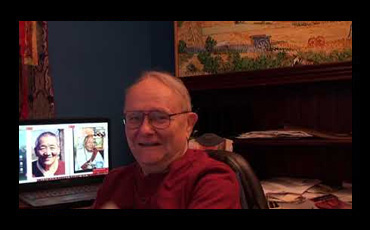
Analysis of Going and Coming: Is Going Possible?, Class #18 (2019-03-05)
The class first reiterates how important it is to connect these teachings to our real, emotional life in order for the teachings to affect us, and that they do not merely remain an intellectual game. The class then continues with objector's (incorrect) assertion that the stanza 1 explains that the gone and the not-yet-gone are directly contradictory, and thus refutes the possibility of the third category, that is, the being-gone.
Recommended prior reading:
• Jeffrey Hopkins. Analysis of Going and Coming: the Second Chapter of Candrakirti's Clear Words. Dharamsala: Library of Tibetan Works and Archives (1976).
• Jeffrey Hopkins. Chapter Two of Ocean of Reasoning by Tsong-ka-pa. Dharamsala: Library of Tibetan Works and Archives (1977).
• Jeffrey Hopkins. Chandrakīrti’s and Tsong-kha-pa’s Commentaries on Nāgārjuna’s “Treatise on the Middle,” Chapter Two: Is Going Possible? UMA Institute for Tibetan Studies (in preparation).
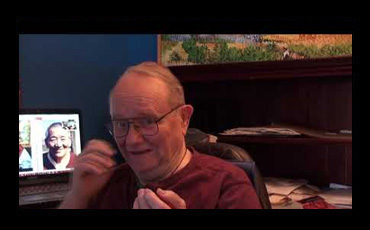
Analysis of Going and Coming: Is Going Possible?, Class #19 (2019-03-12)
The class first talks about how Nagarjuna's analysis is relevant to our everyday experience - if things exist as solidly as we imagine it in our ordinary behaviour, not intellectually when we think about it, then they would have to follow the rules as Nagarjuna sets them in refuting inherent existence. Then the class moves on to discusing verses 3 to 5.
Recommended prior reading:
• Jeffrey Hopkins. Analysis of Going and Coming: the Second Chapter of Candrakirti's Clear Words. Dharamsala: Library of Tibetan Works and Archives (1976).
• Jeffrey Hopkins. Chapter Two of Ocean of Reasoning by Tsong-ka-pa. Dharamsala: Library of Tibetan Works and Archives (1977).
• Jeffrey Hopkins. Chandrakīrti’s and Tsong-kha-pa’s Commentaries on Nāgārjuna’s “Treatise on the Middle,” Chapter Two: Is Going Possible? UMA Institute for Tibetan Studies (in preparation).
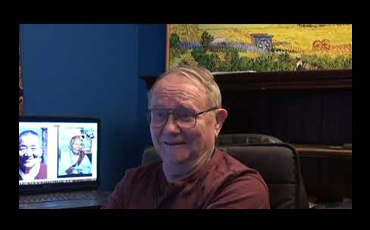
Analysis of Going and Coming: Is Going Possible?, Class #20 (2019-03-19)
Chandrakīrti says that in chapter 2 an objector requests Nāgārjuna to provide some new reasonings to refute going. An analysis follows where if going would inherently exist (as we experience it), it would have to be findable among the three paths—the gone, the not-yet-gone, and the being-gone. However, such cannot be found. Another analysis is as follows: a goer can’t begin going because a goer is already going; also a non-goer can’t begin going because a non-goer is necessarily not going. So, who is going? We need to recognize how such analysis connects to our ordinary experience and how to apply such reasonings.
Recommended prior reading:
• Jeffrey Hopkins. Analysis of Going and Coming: the Second Chapter of Candrakirti's Clear Words. Dharamsala: Library of Tibetan Works and Archives (1976).
• Jeffrey Hopkins. Chapter Two of Ocean of Reasoning by Tsong-ka-pa. Dharamsala: Library of Tibetan Works and Archives (1977).
• Jeffrey Hopkins. Chandrakīrti’s and Tsong-kha-pa’s Commentaries on Nāgārjuna’s “Treatise on the Middle,” Chapter Two: Is Going Possible? UMA Institute for Tibetan Studies (in preparation).
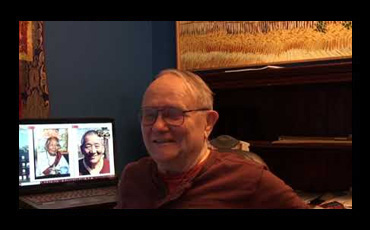
Analysis of Going and Coming: Is Going Possible?, Class #21 (2019-03-26)
The class discusses verse 2, in which the objector asserts that going exists on the being-gone-over, and Nāgārjuna's answer in verse 3 that this is not feasible, because an action of going is used to designate an area as a being-gone-over and the same action cannot be used to designate also a person who is going, because this action of going was already used up.
Recommended prior reading:
• Jeffrey Hopkins. Analysis of Going and Coming: the Second Chapter of Candrakirti's Clear Words. Dharamsala: Library of Tibetan Works and Archives (1976).
• Jeffrey Hopkins. Chapter Two of Ocean of Reasoning by Tsong-ka-pa. Dharamsala: Library of Tibetan Works and Archives (1977).
• Jeffrey Hopkins. Chandrakīrti’s and Tsong-kha-pa’s Commentaries on Nāgārjuna’s “Treatise on the Middle,” Chapter Two: Is Going Possible? UMA Institute for Tibetan Studies (in preparation).
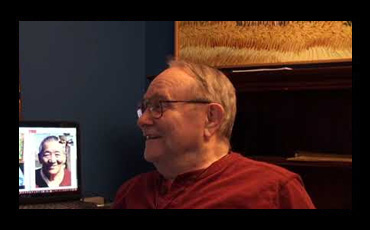
Analysis of Going and Coming: Is Going Possible?, Class #22 (2019-04-02)
The class continues with verse 3, in which Nāgārjuna points out how one action of going cannot be used to designate both the area and the agent who is going. To understand the issue and answer more clearly, the use of imagination is suggested: imagining the area, the action on the area, the legs, action on the legs etc. Imagining this process clearly and substantializing it will serve as a big clue how to do this and the following meditation in different chapters. Otherwise it will be just words and the impact will be missed.
Recommended prior reading:
• Jeffrey Hopkins. Analysis of Going and Coming: the Second Chapter of Candrakirti's Clear Words. Dharamsala: Library of Tibetan Works and Archives (1976).
• Jeffrey Hopkins. Chapter Two of Ocean of Reasoning by Tsong-ka-pa. Dharamsala: Library of Tibetan Works and Archives (1977).
• Jeffrey Hopkins. Chandrakīrti’s and Tsong-kha-pa’s Commentaries on Nāgārjuna’s “Treatise on the Middle,” Chapter Two: Is Going Possible? UMA Institute for Tibetan Studies (in preparation).